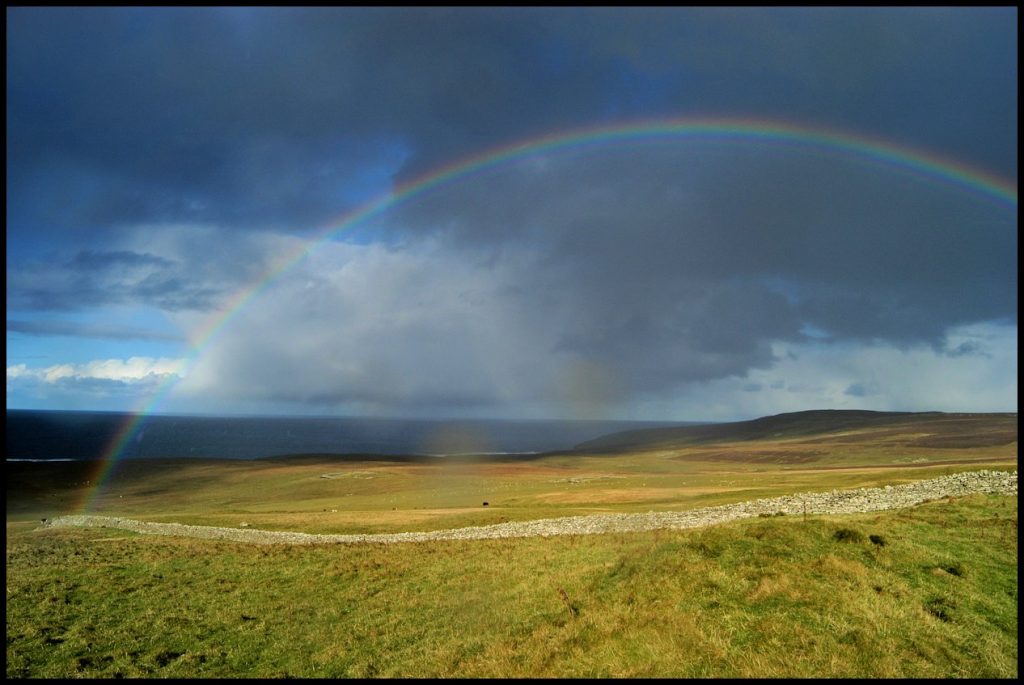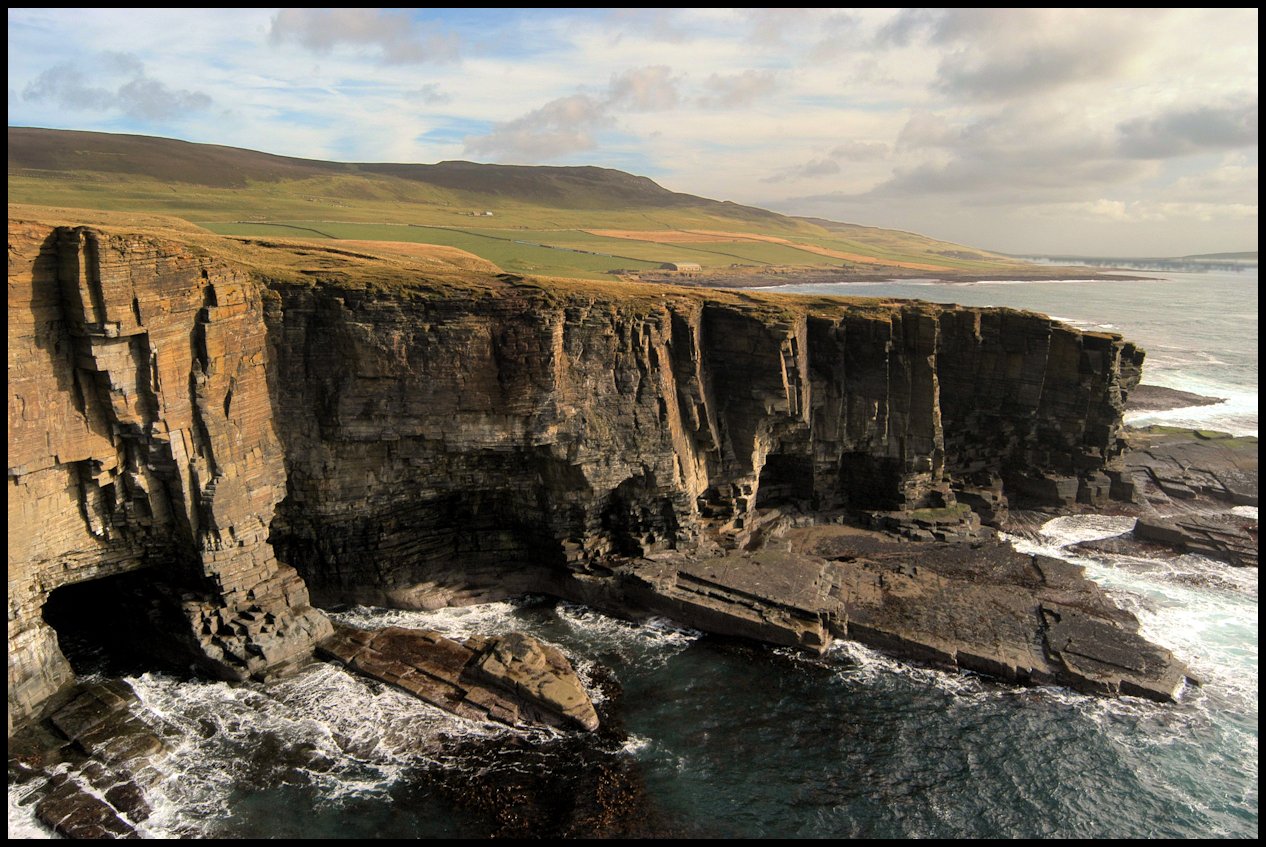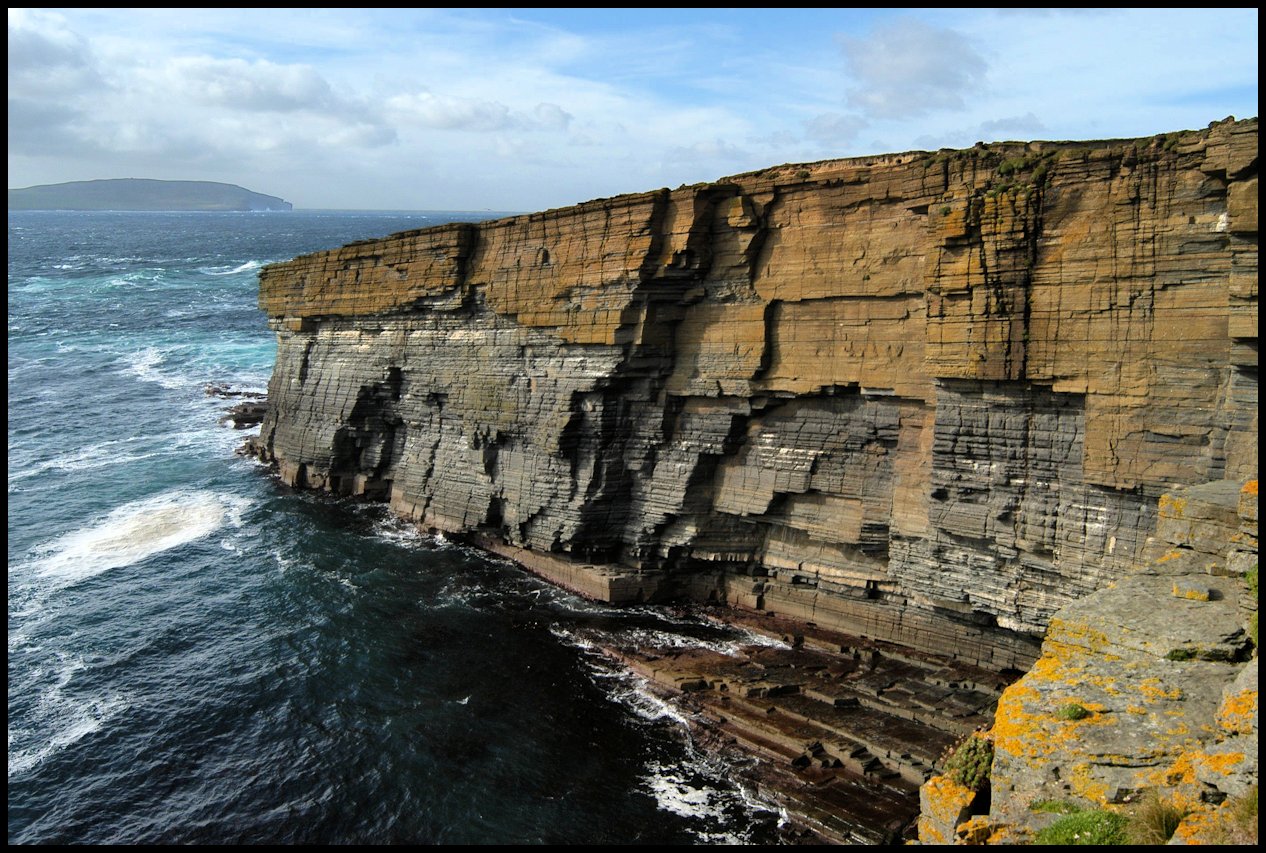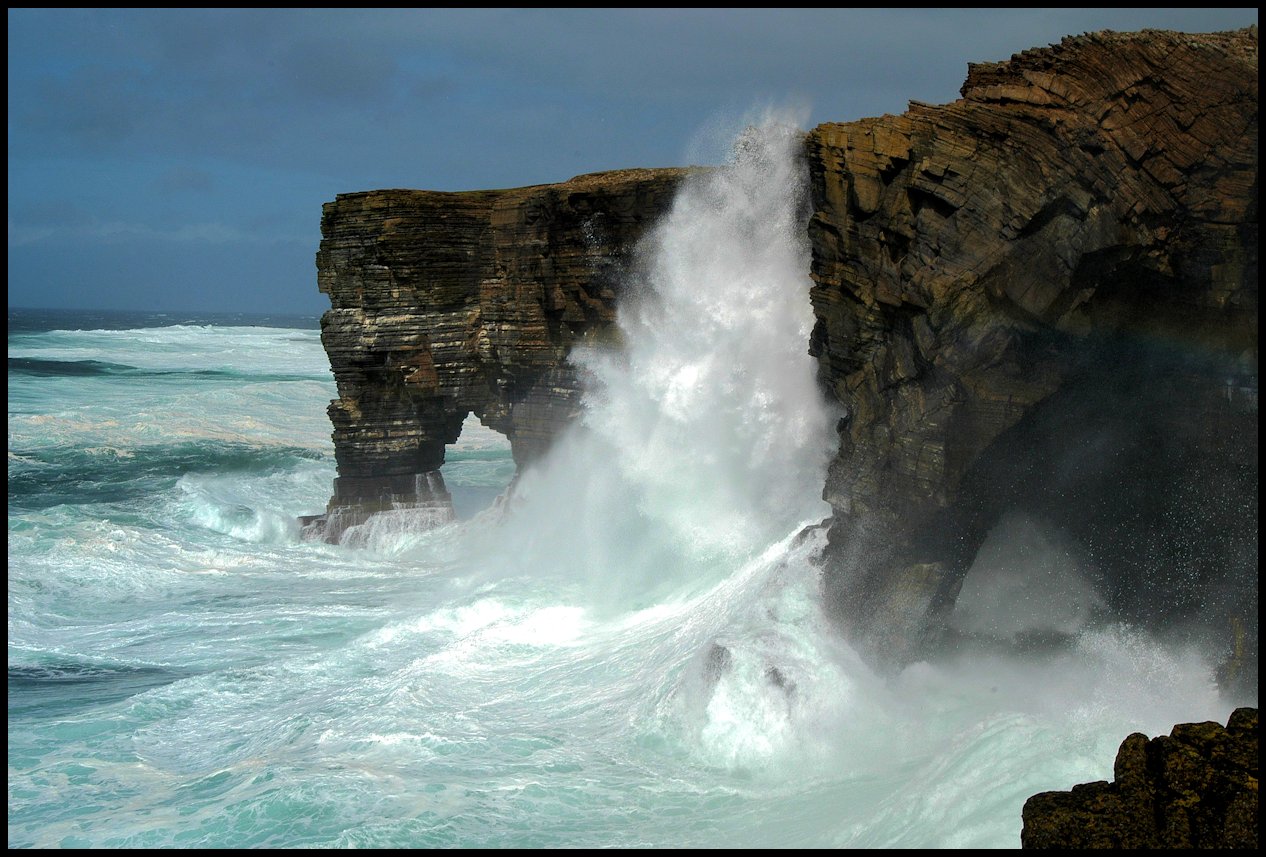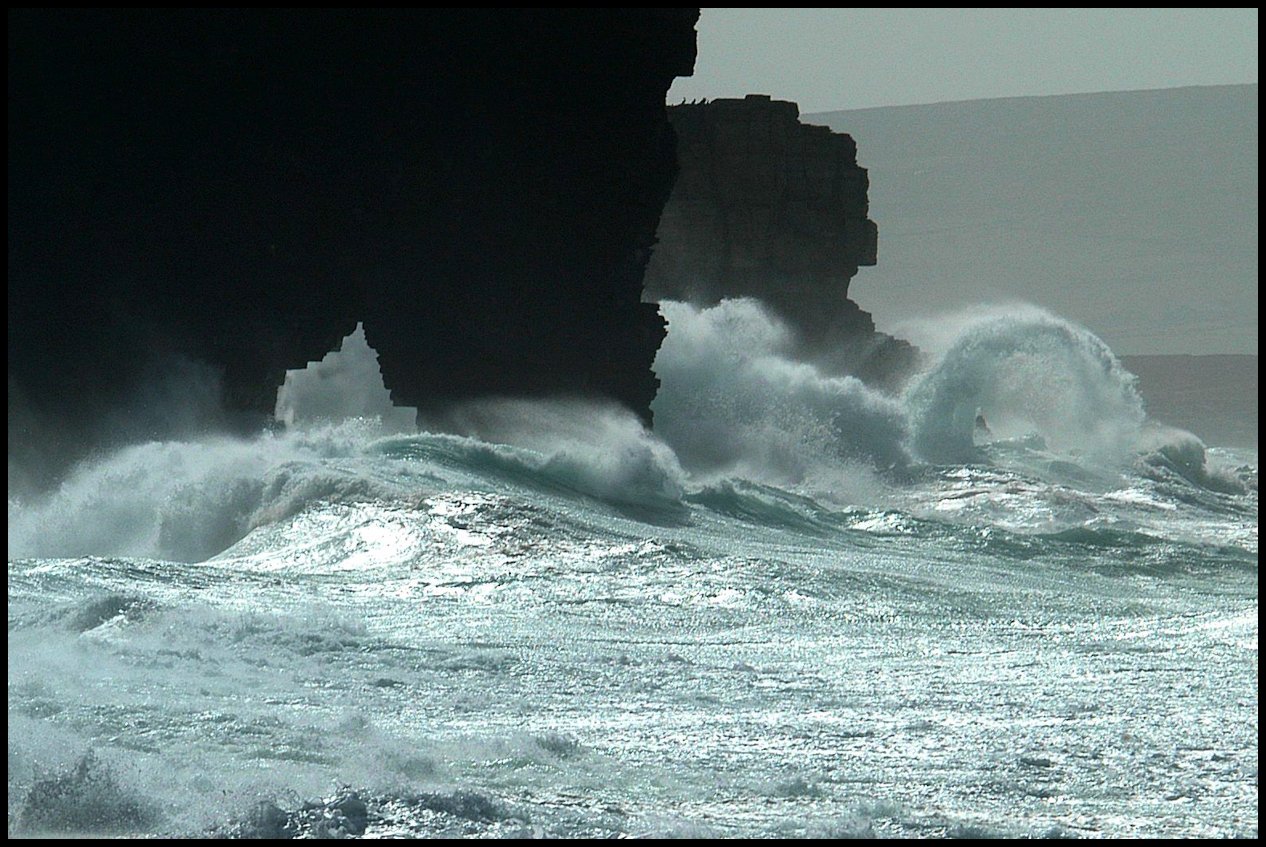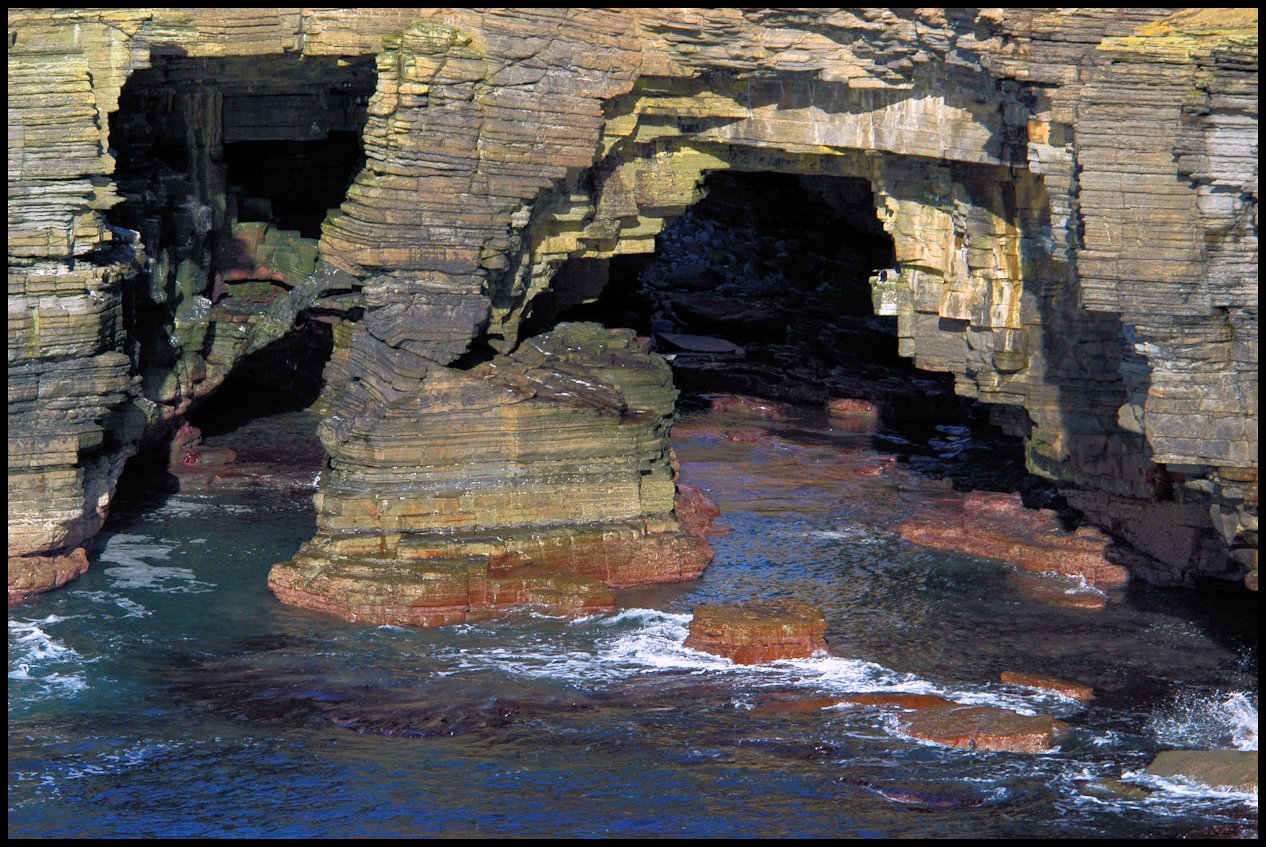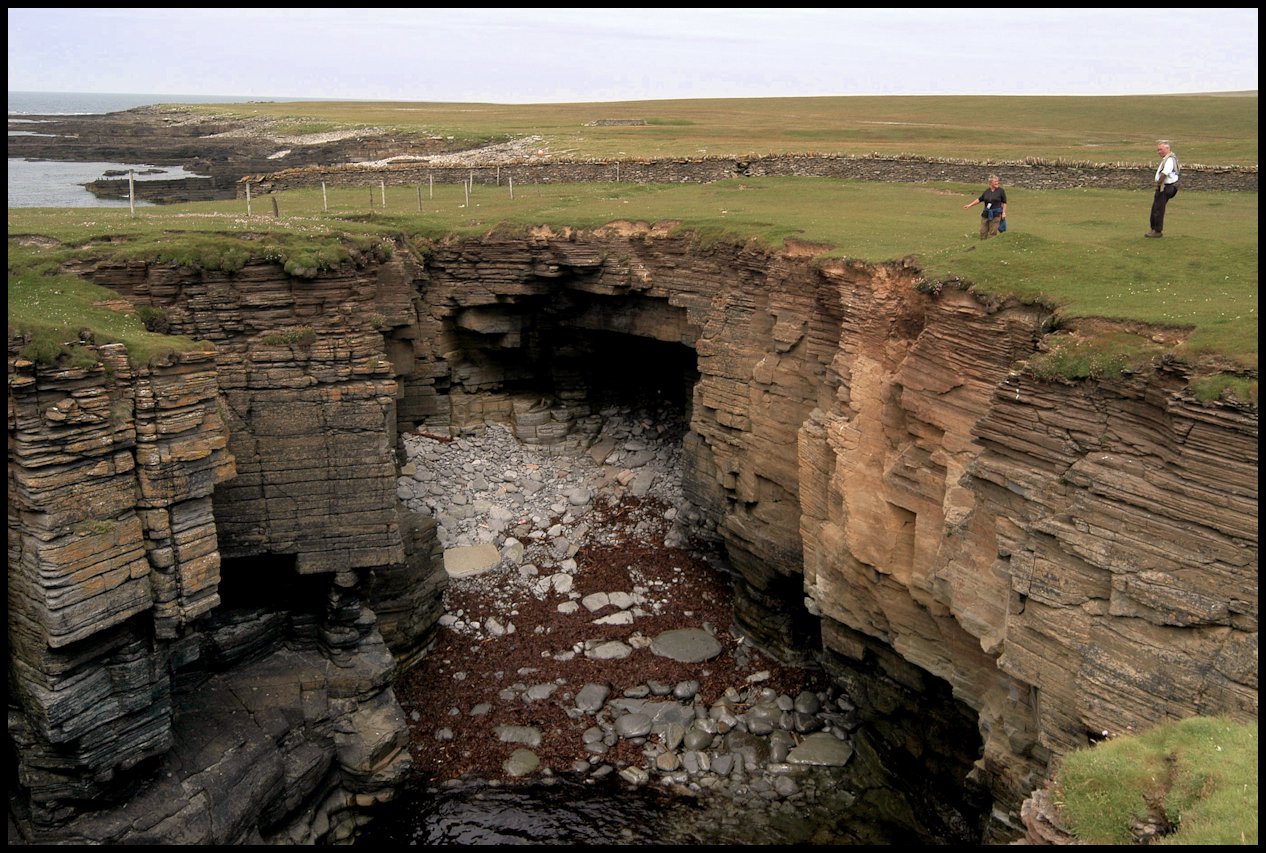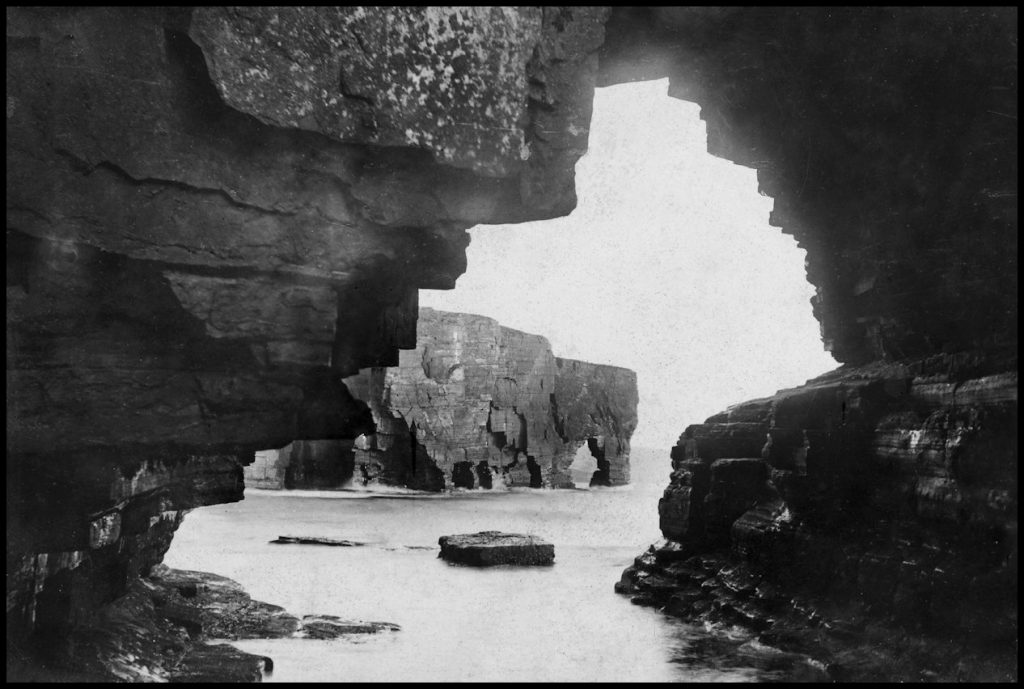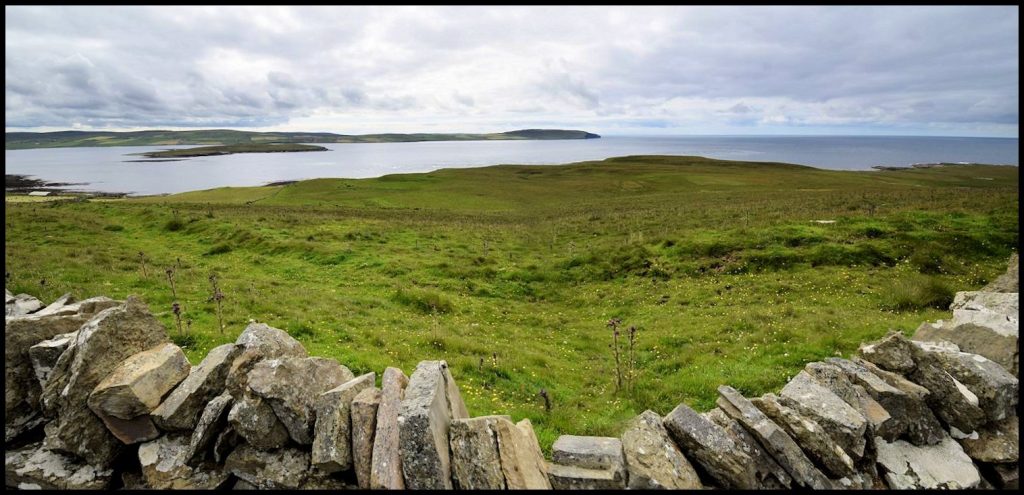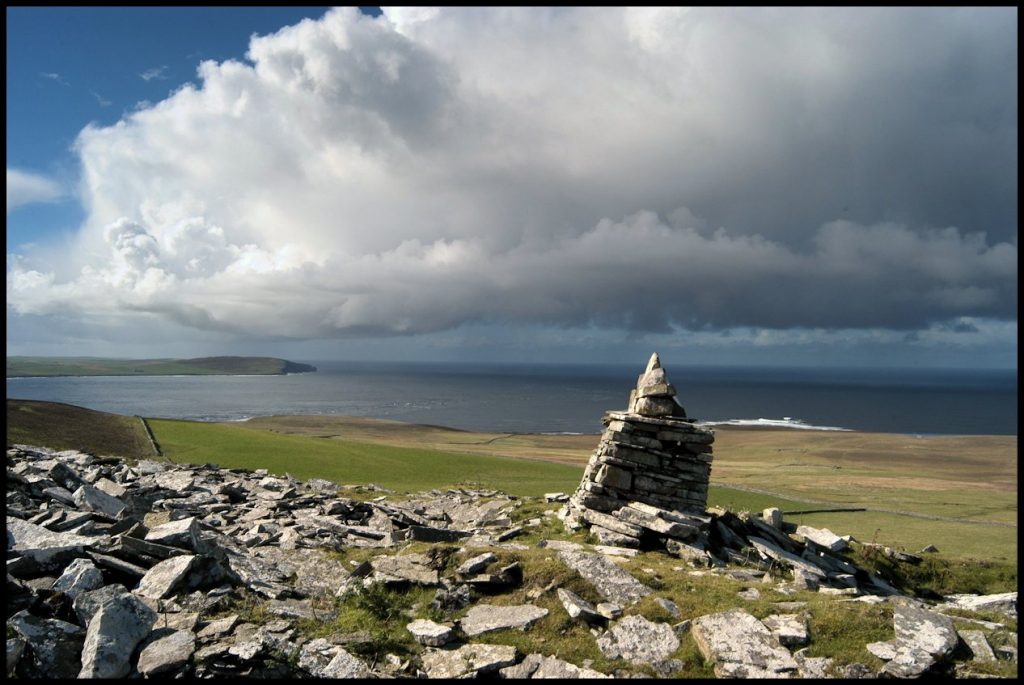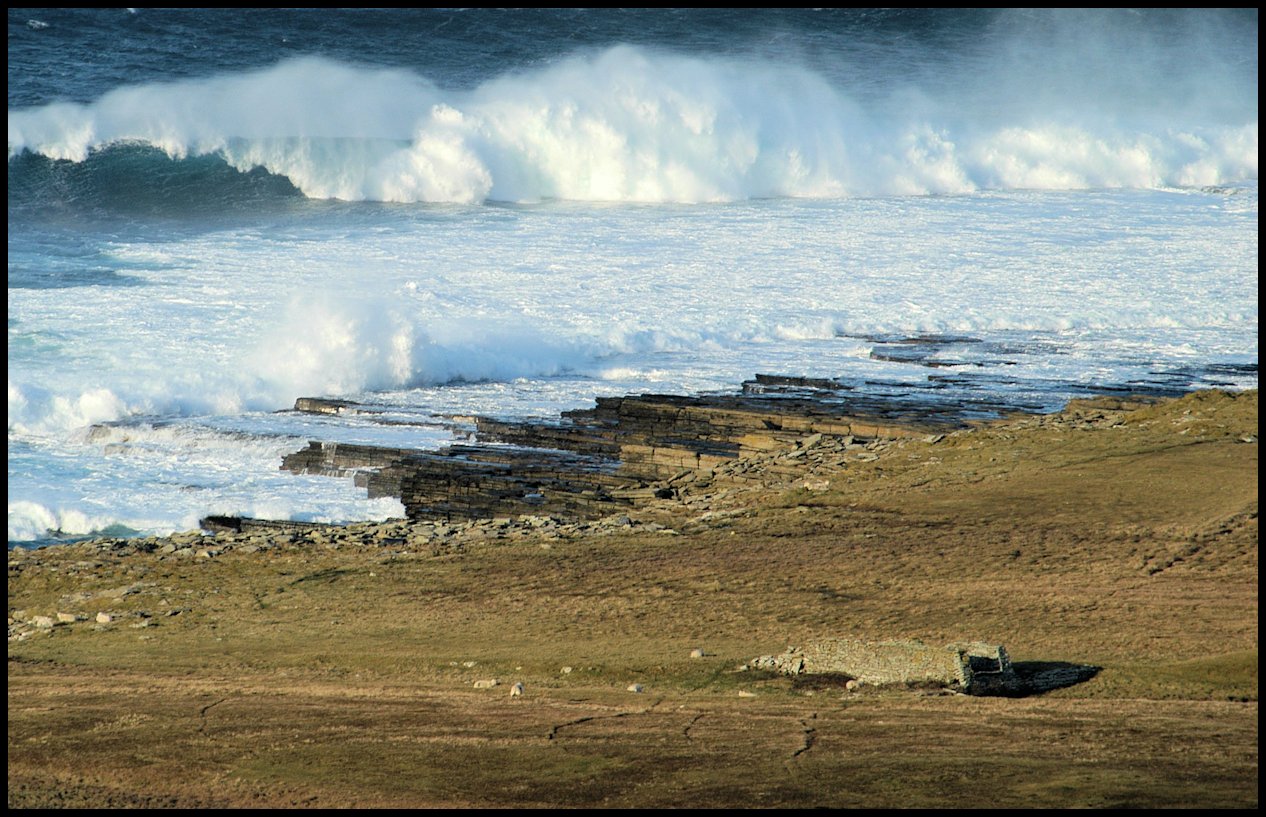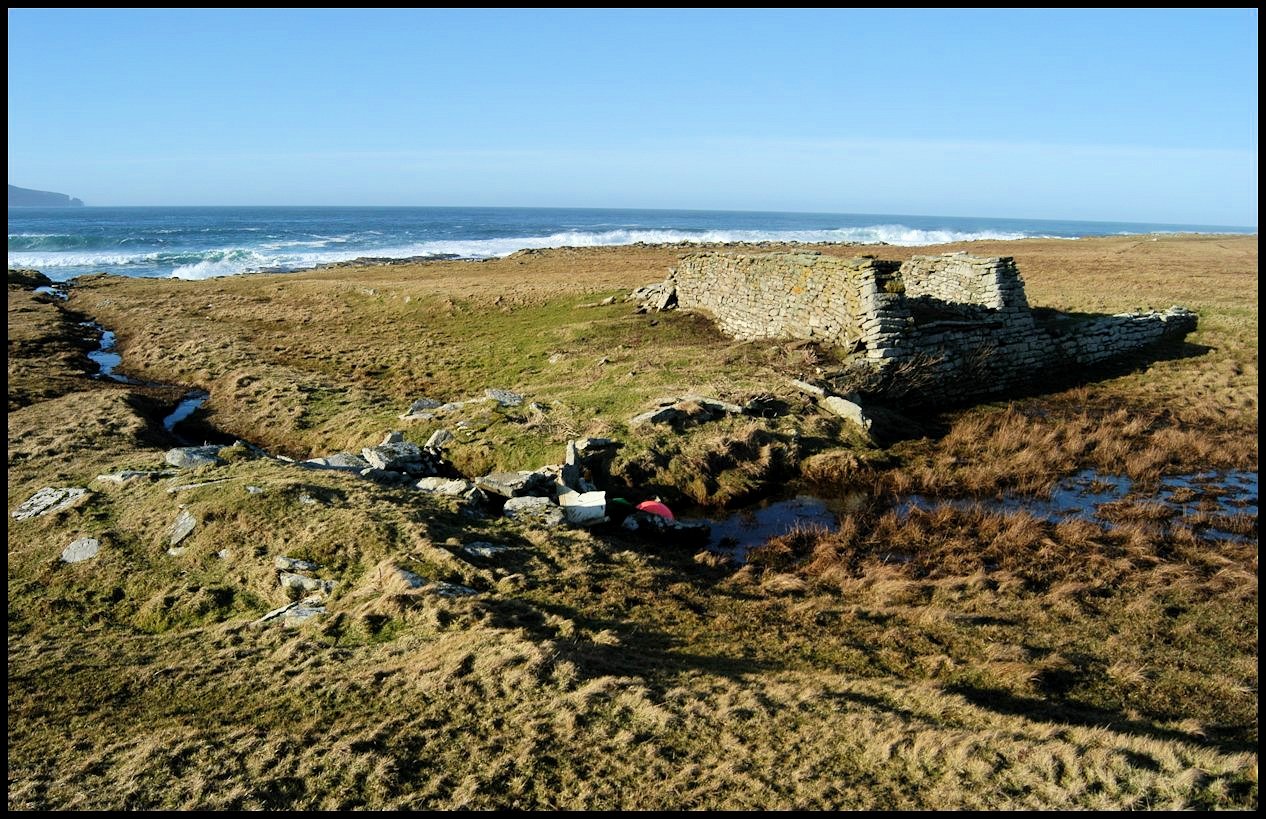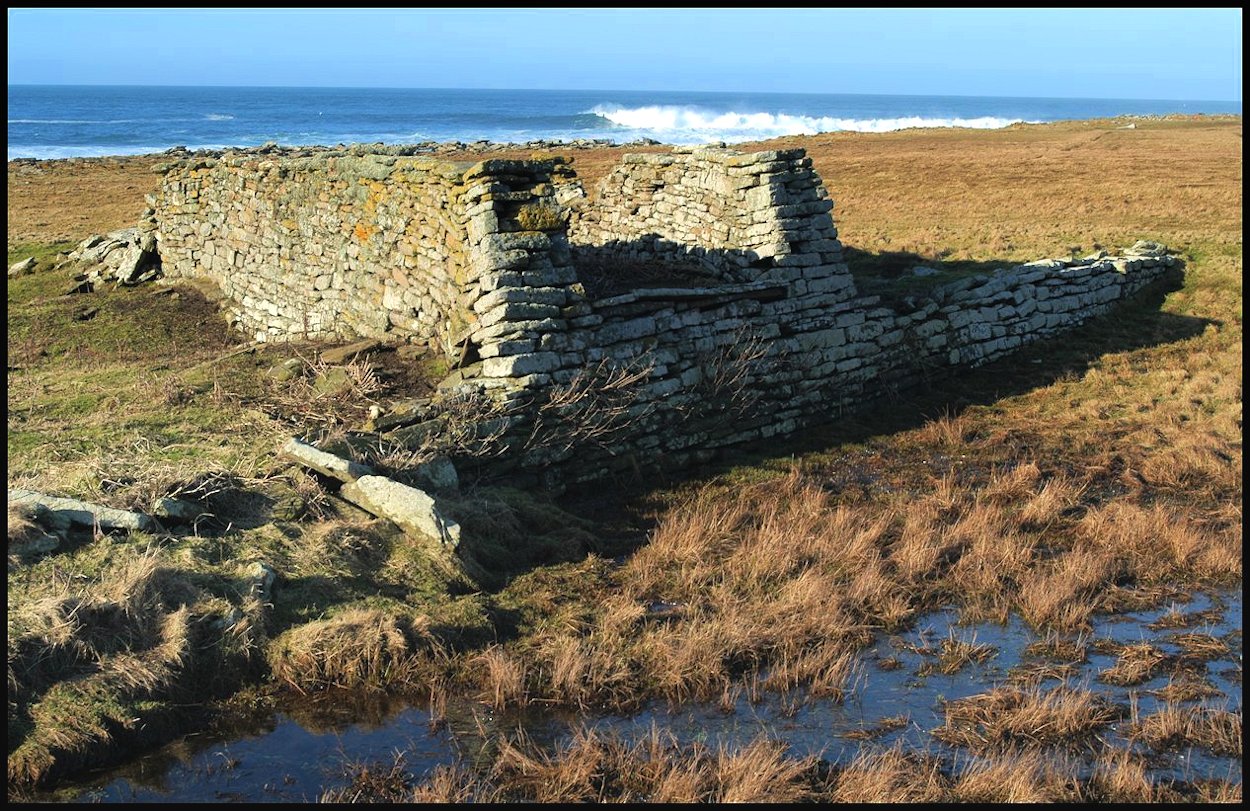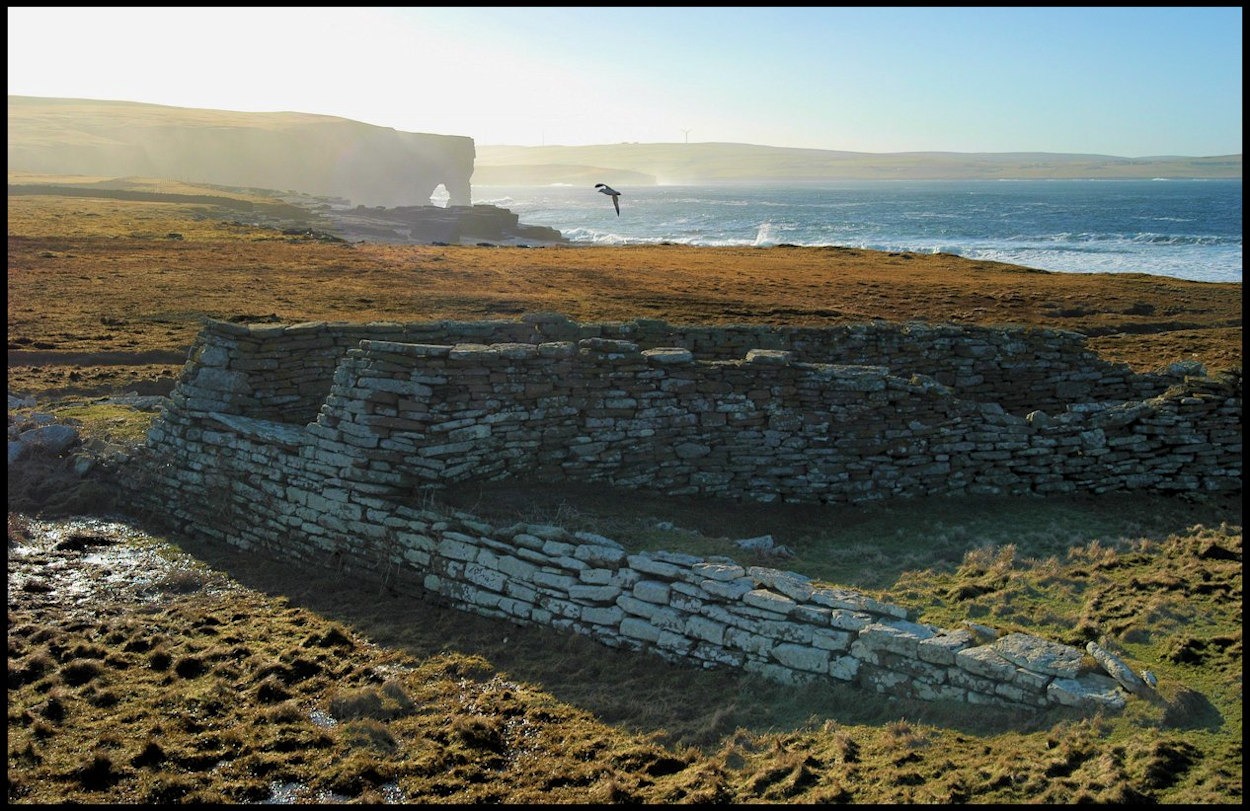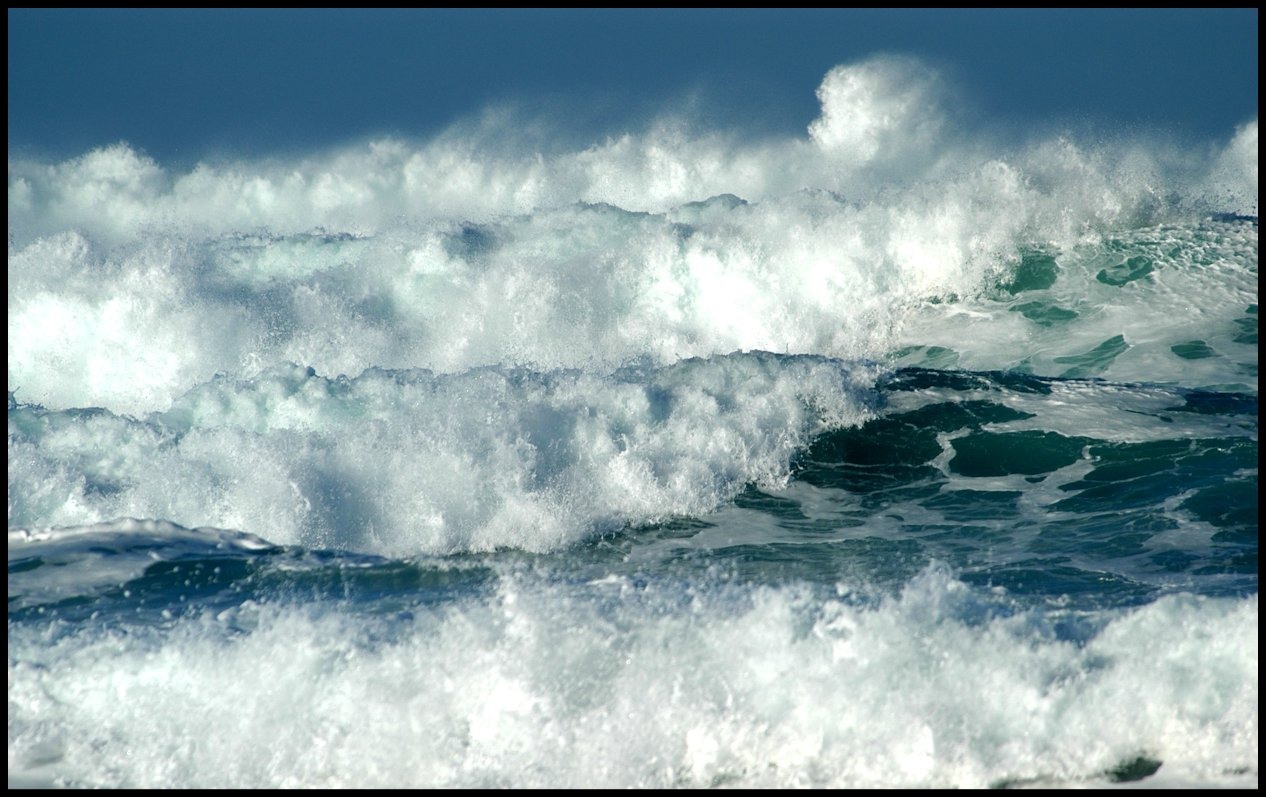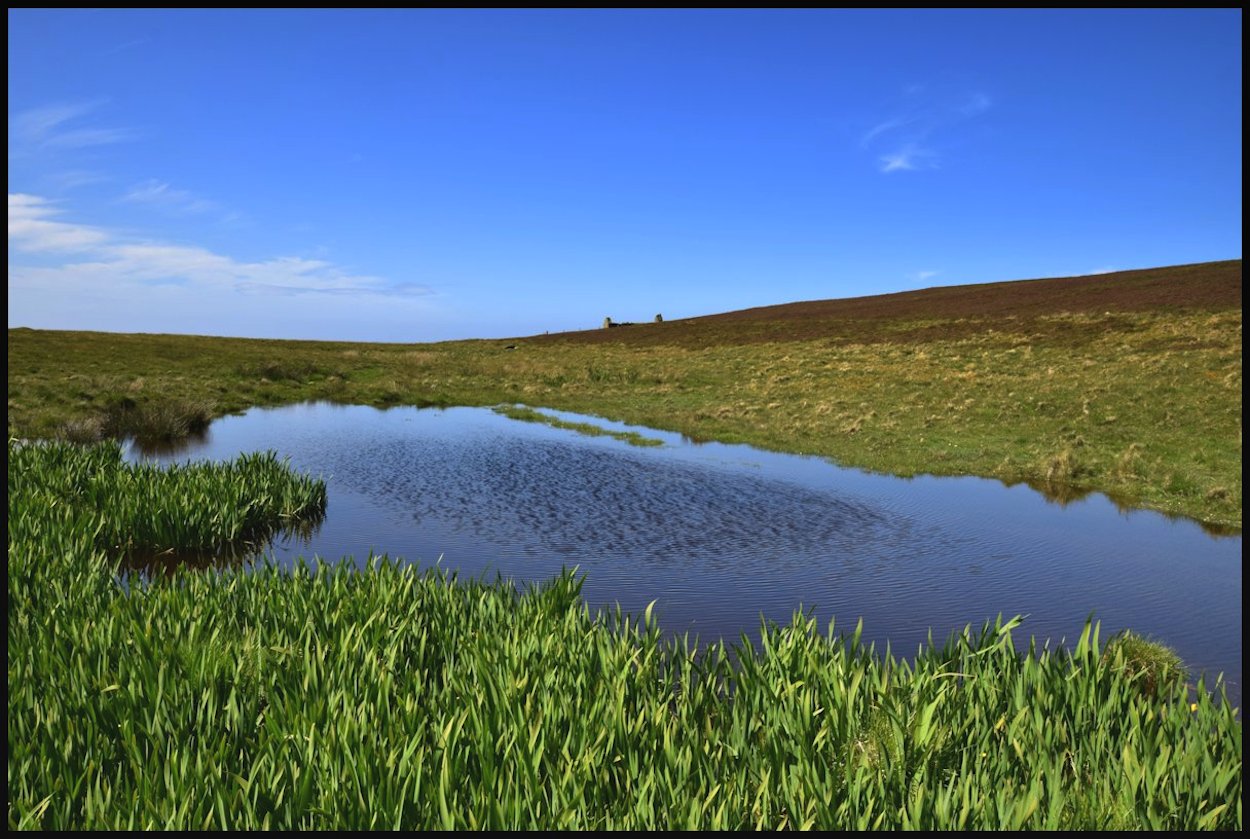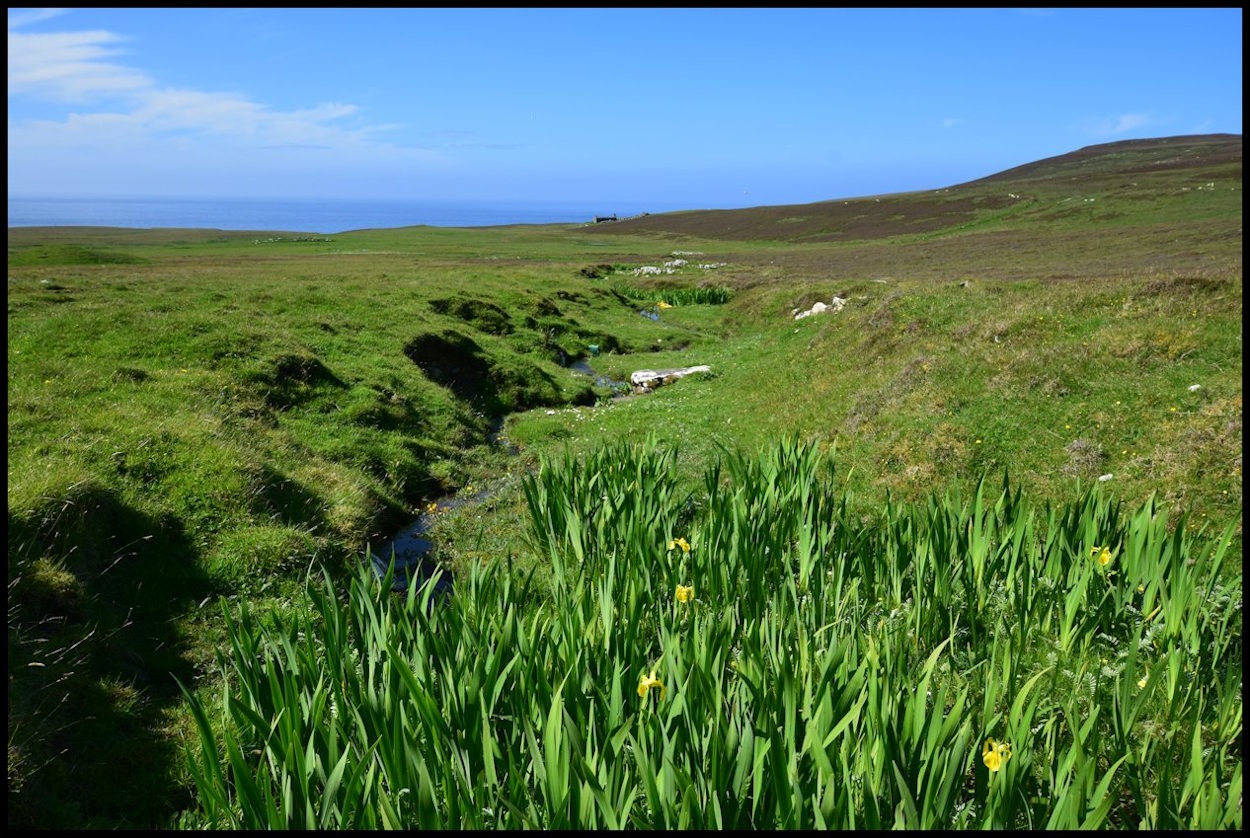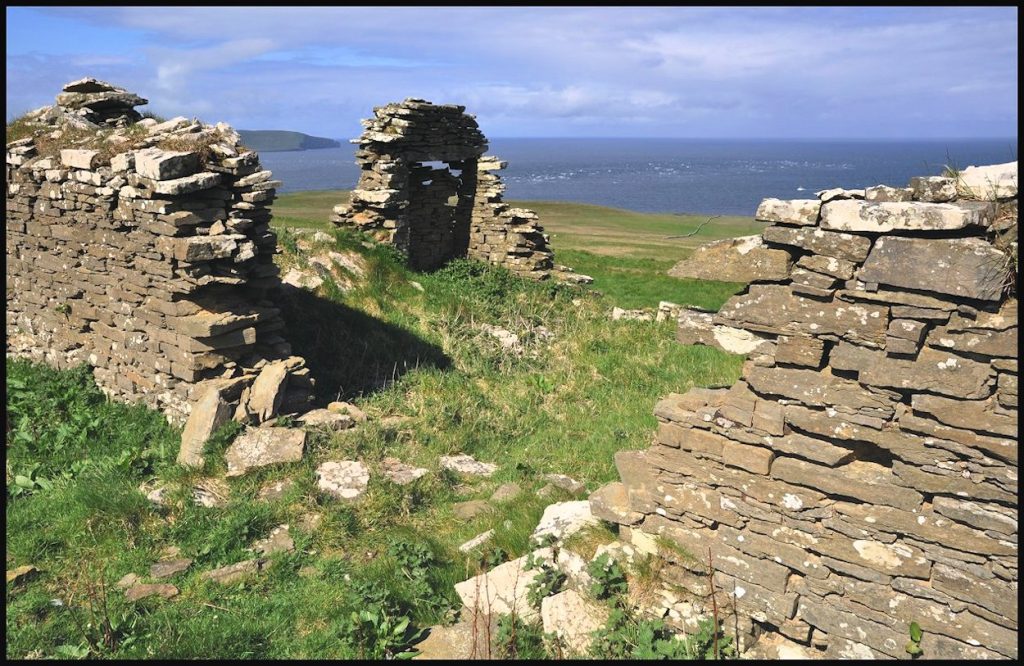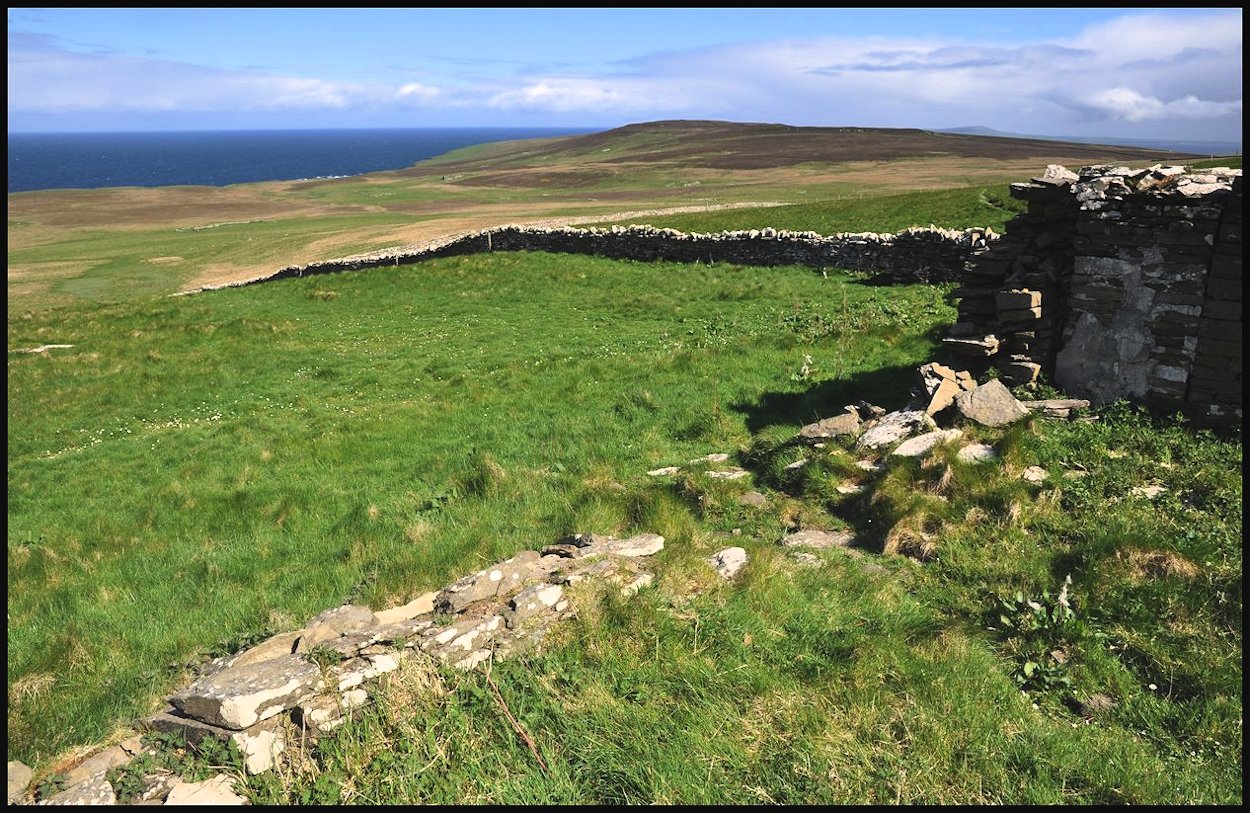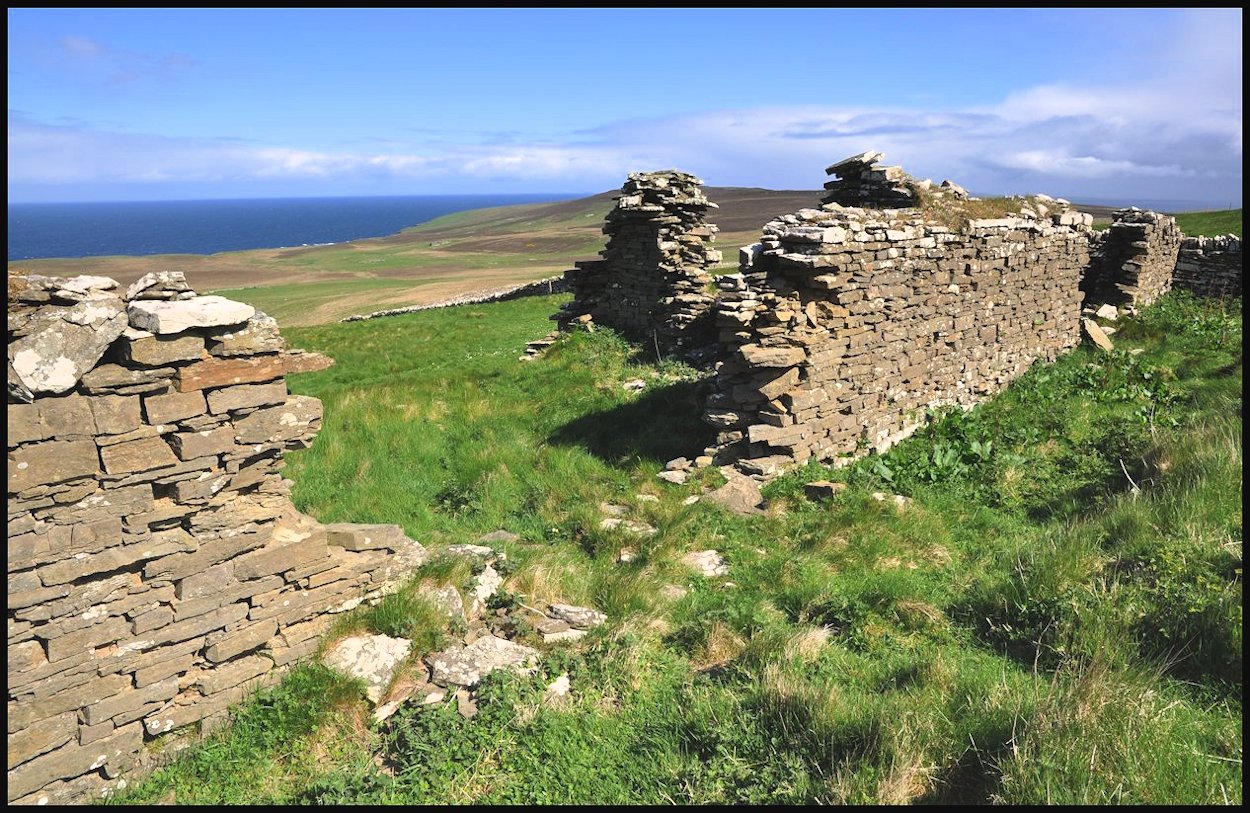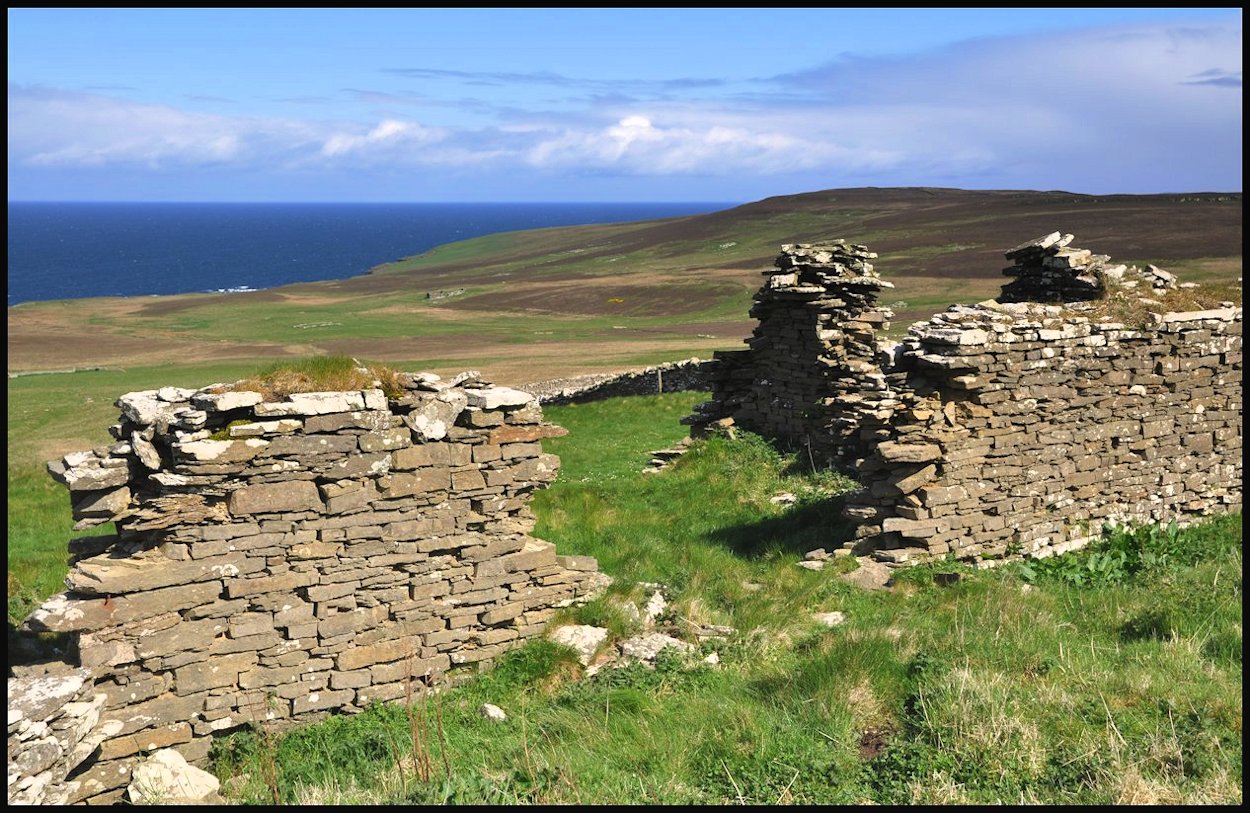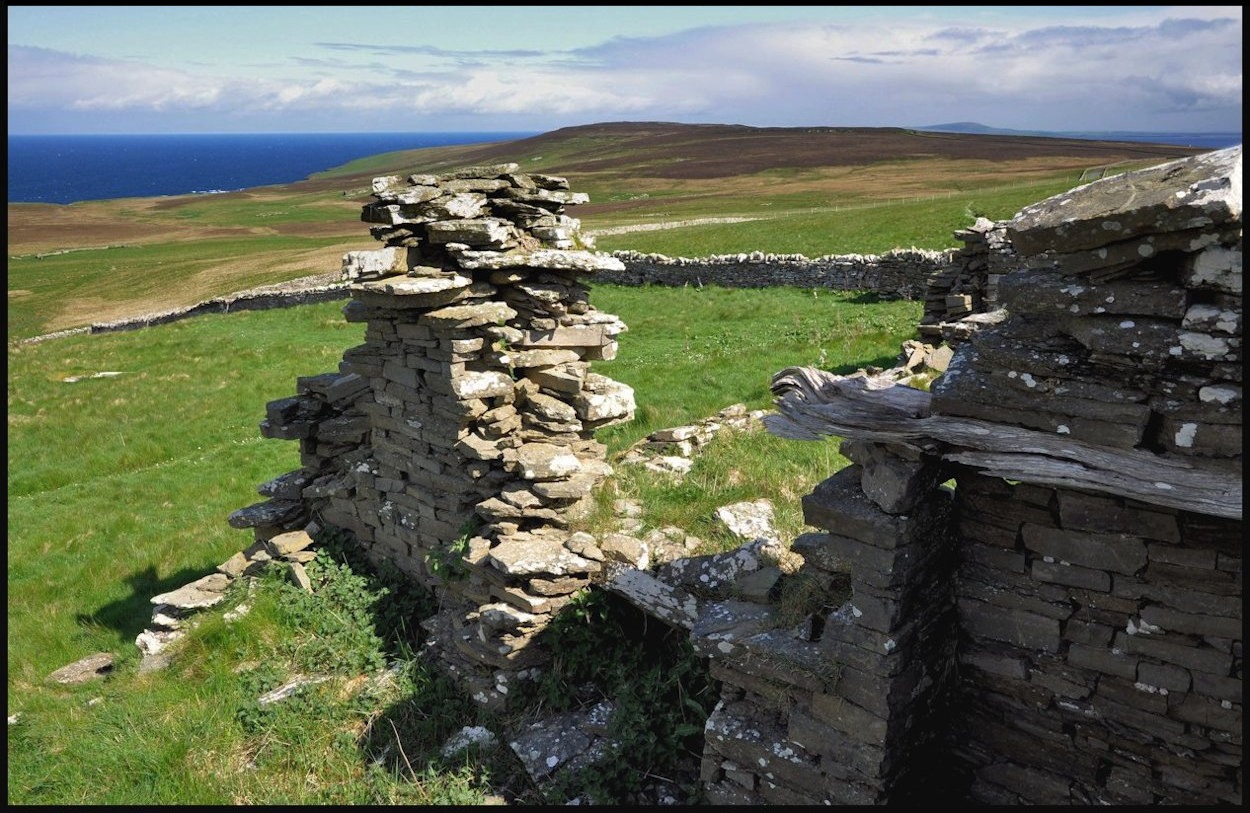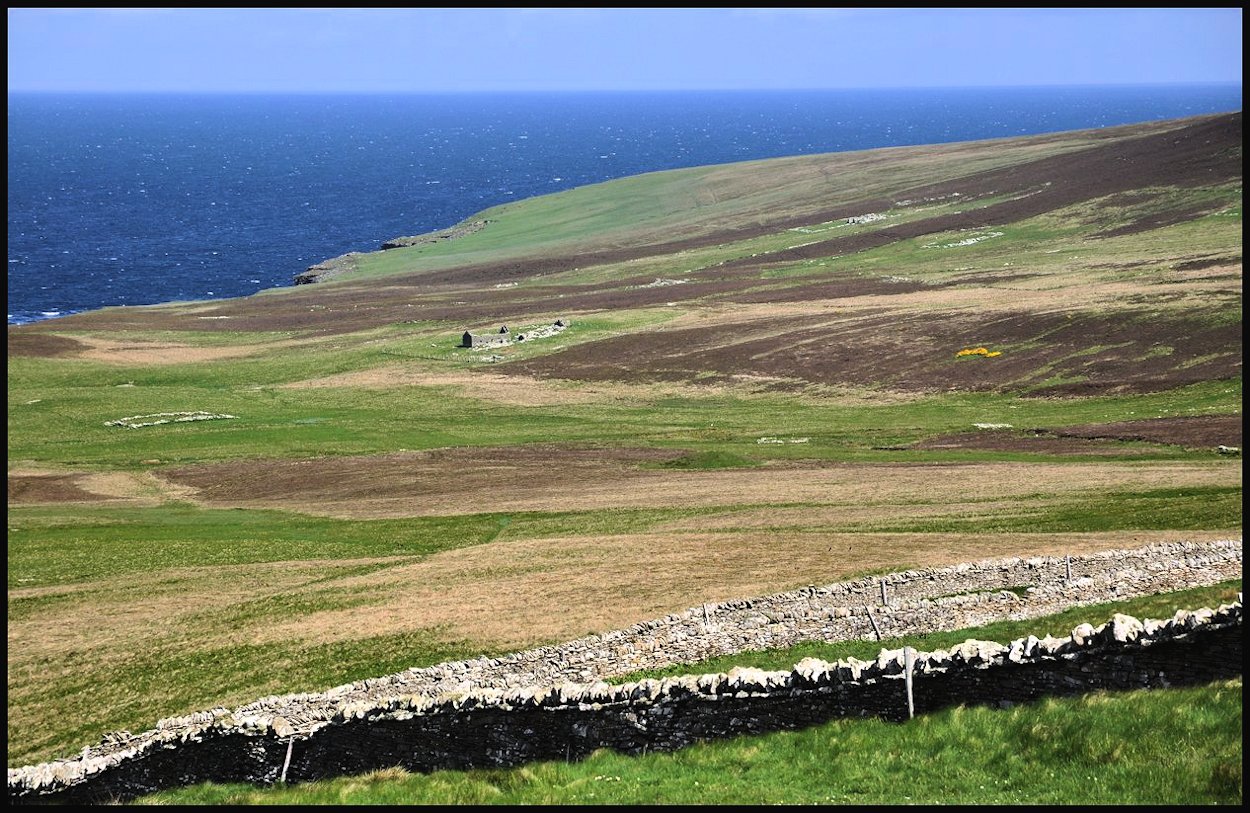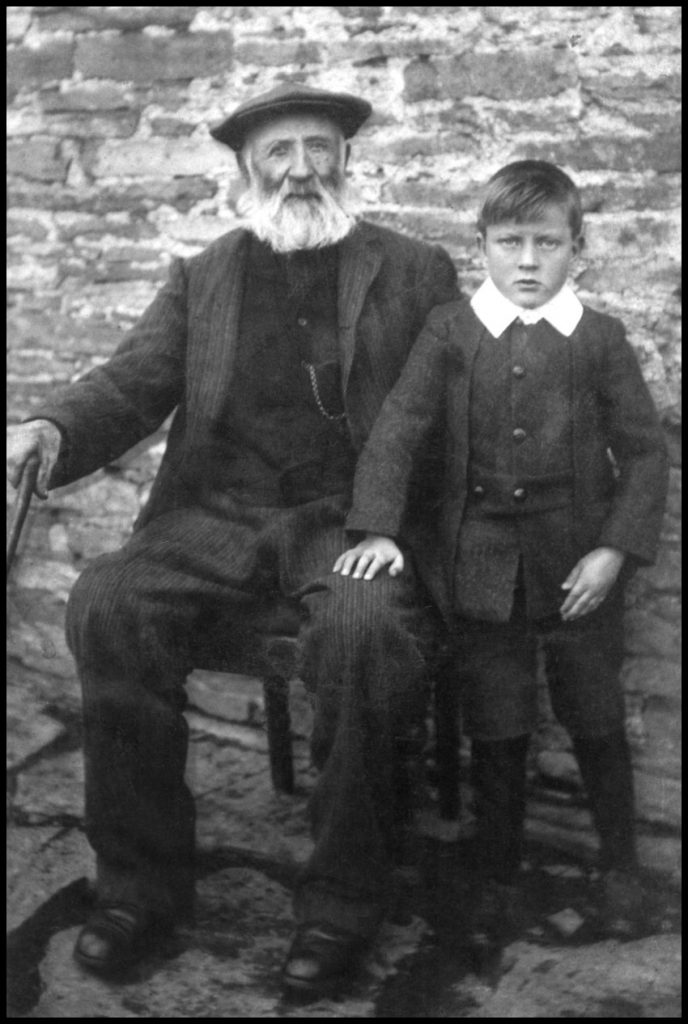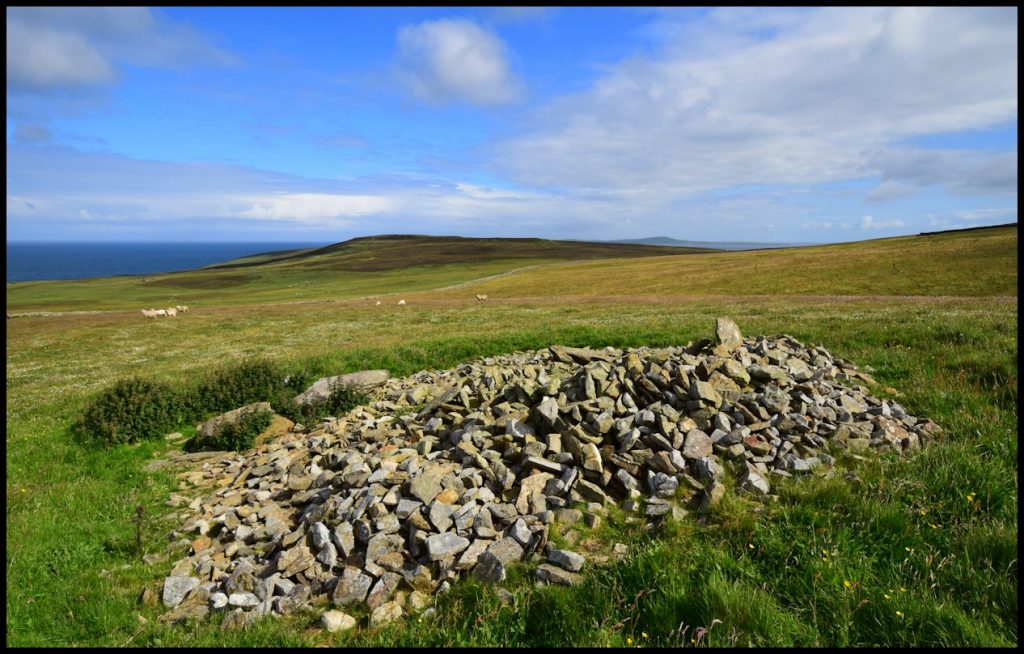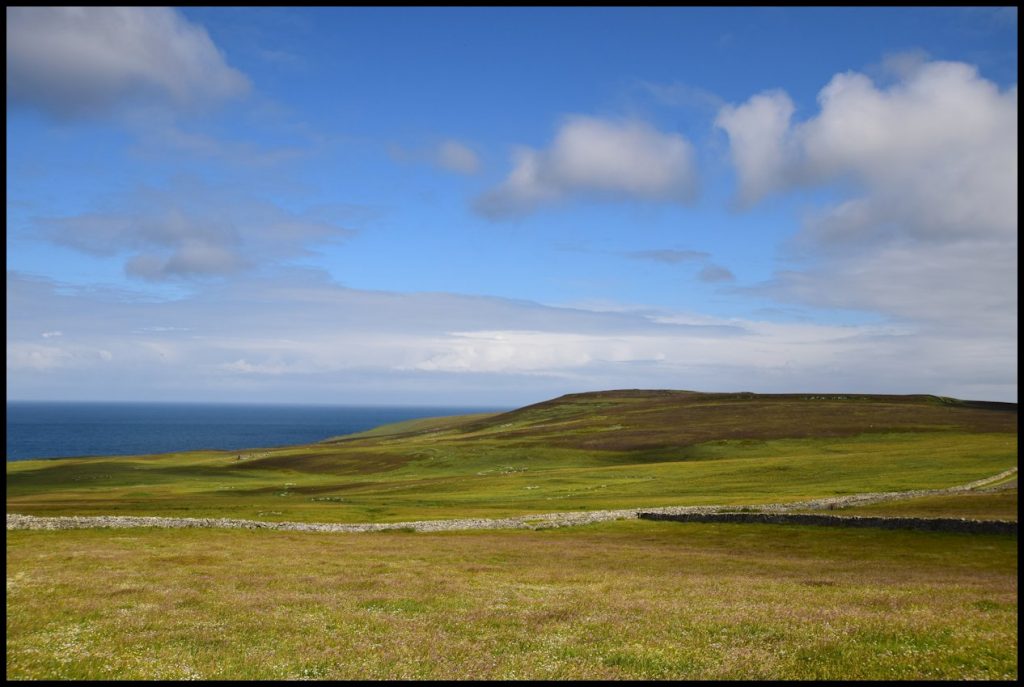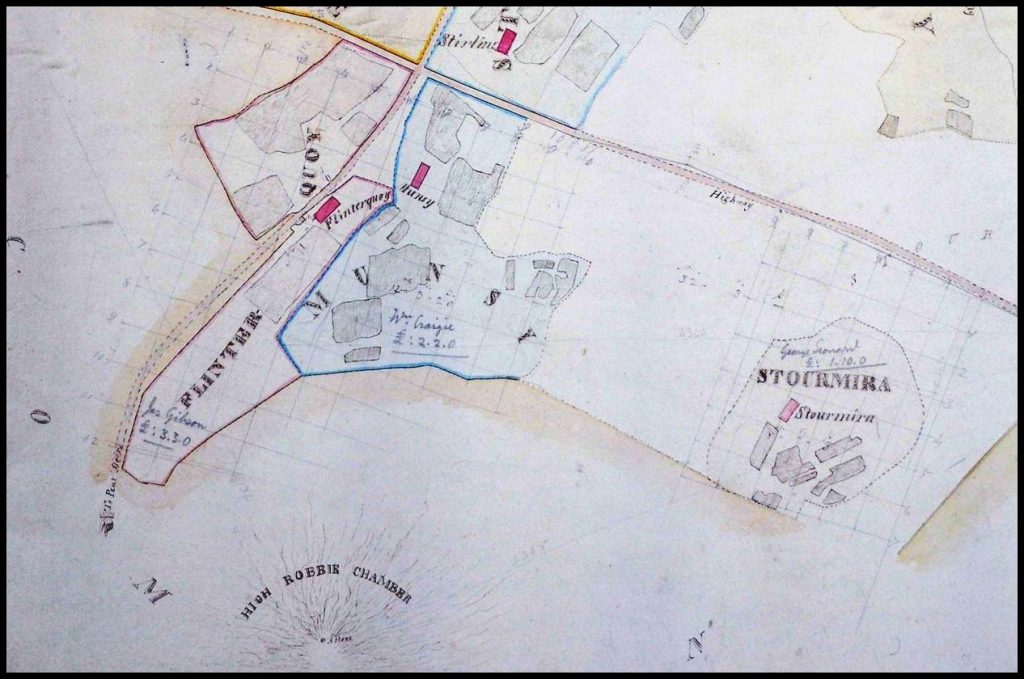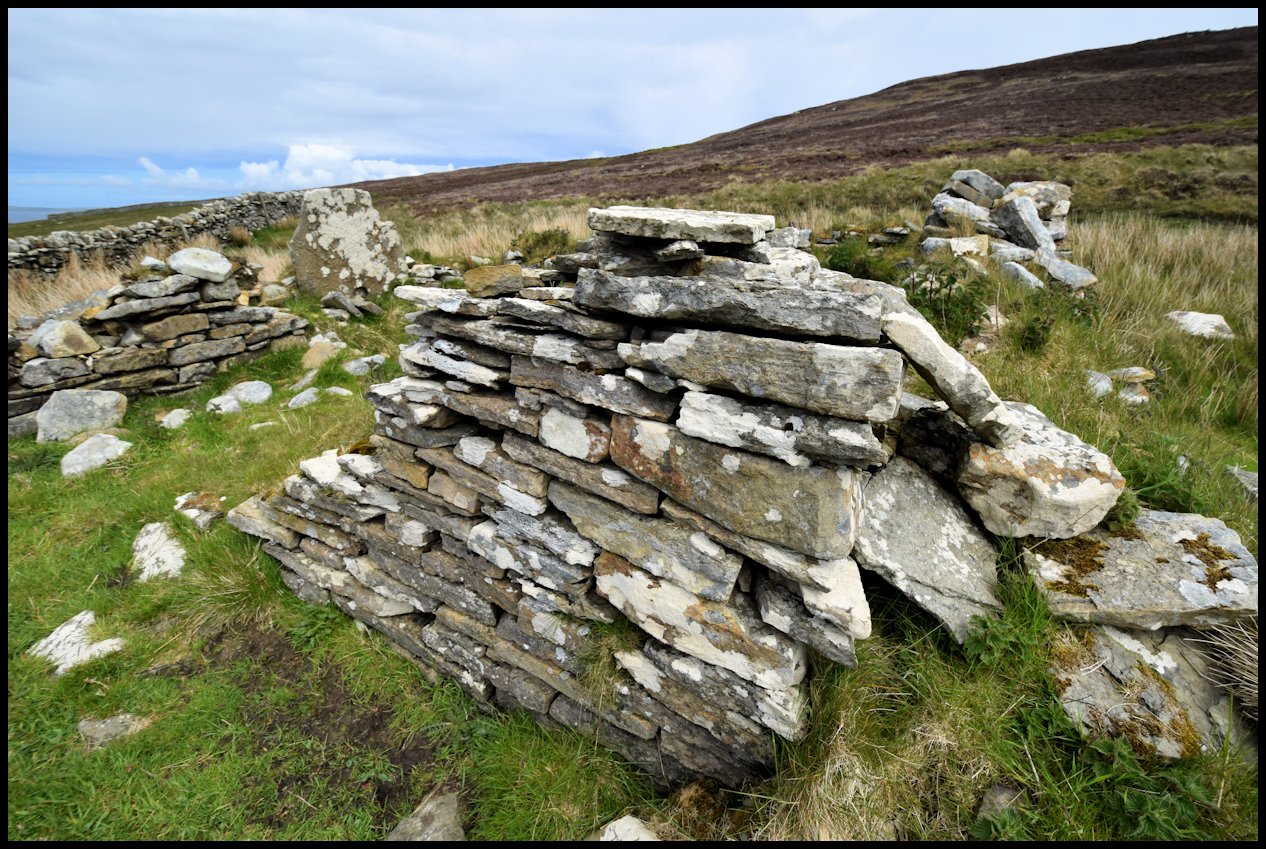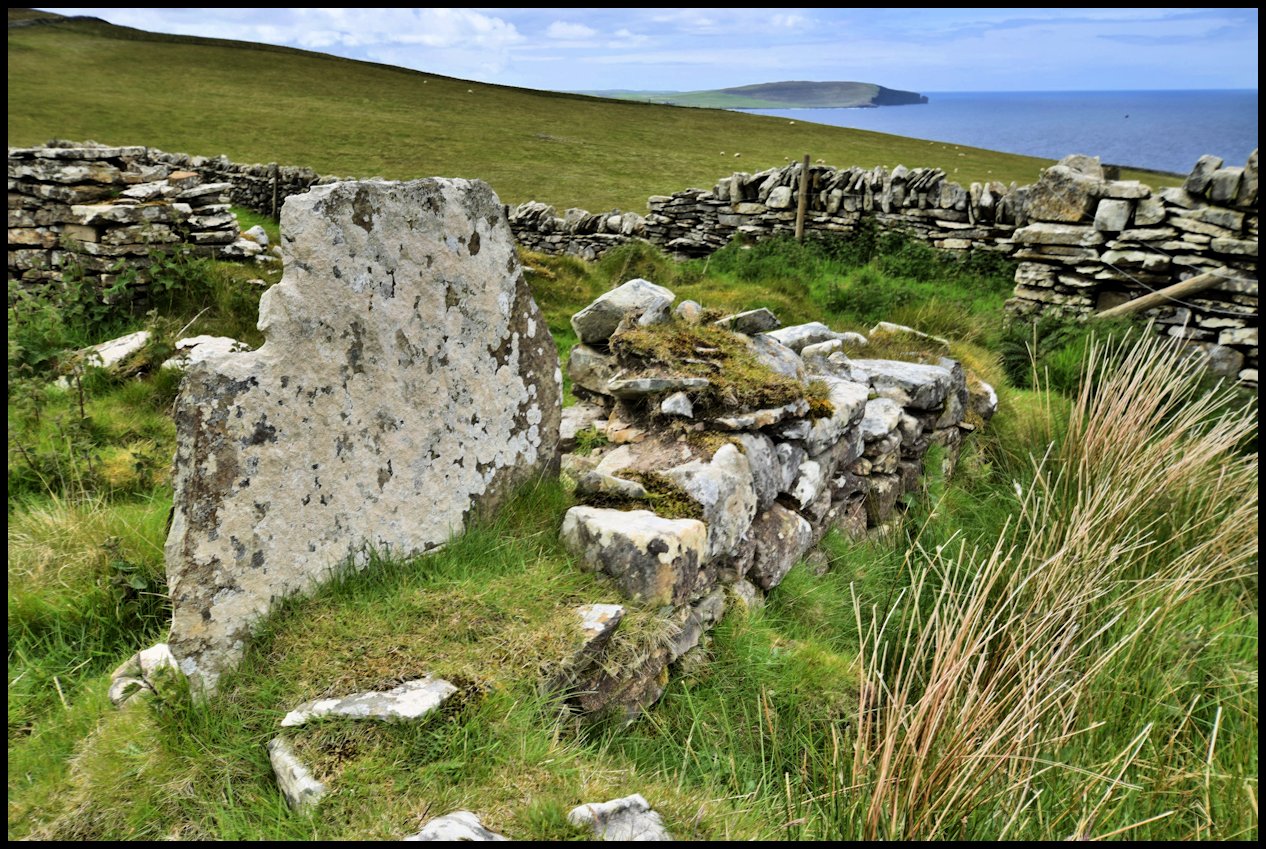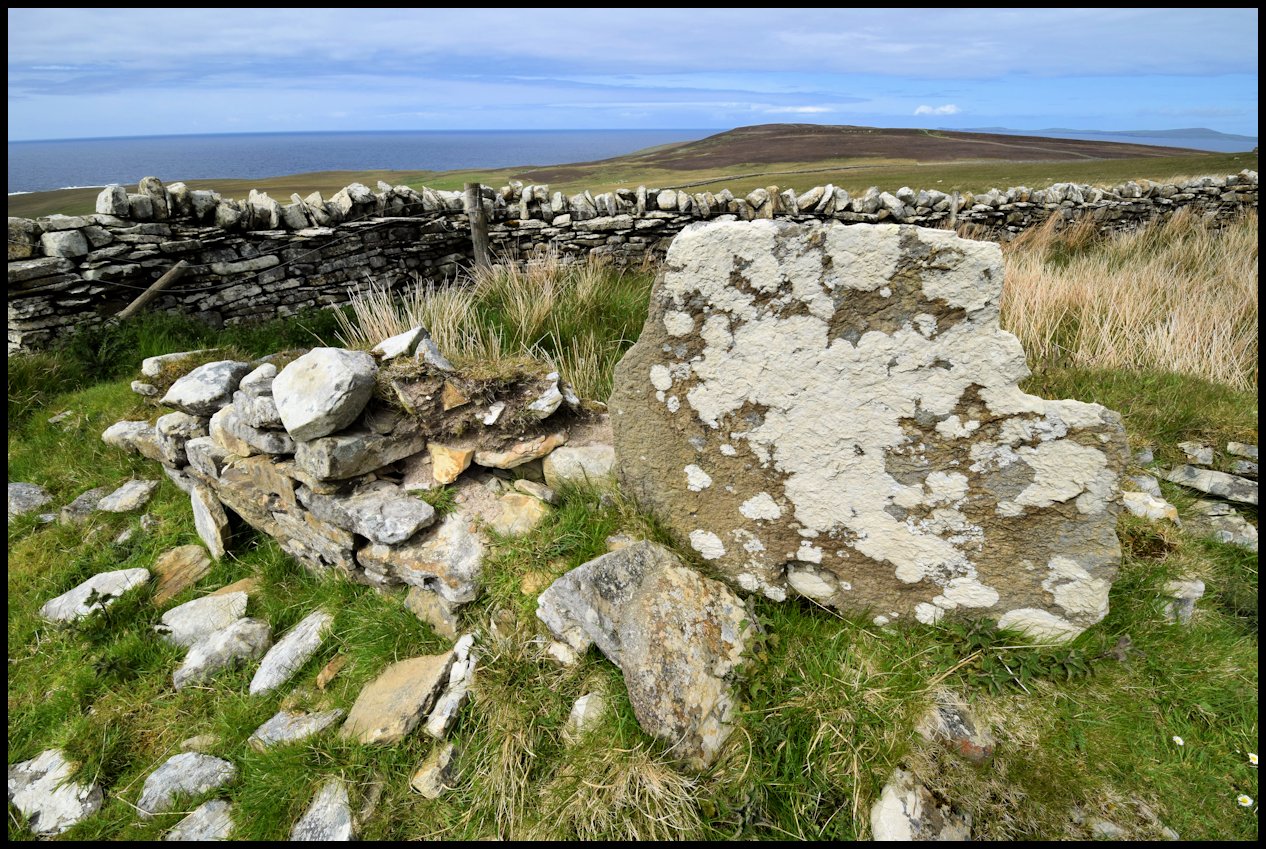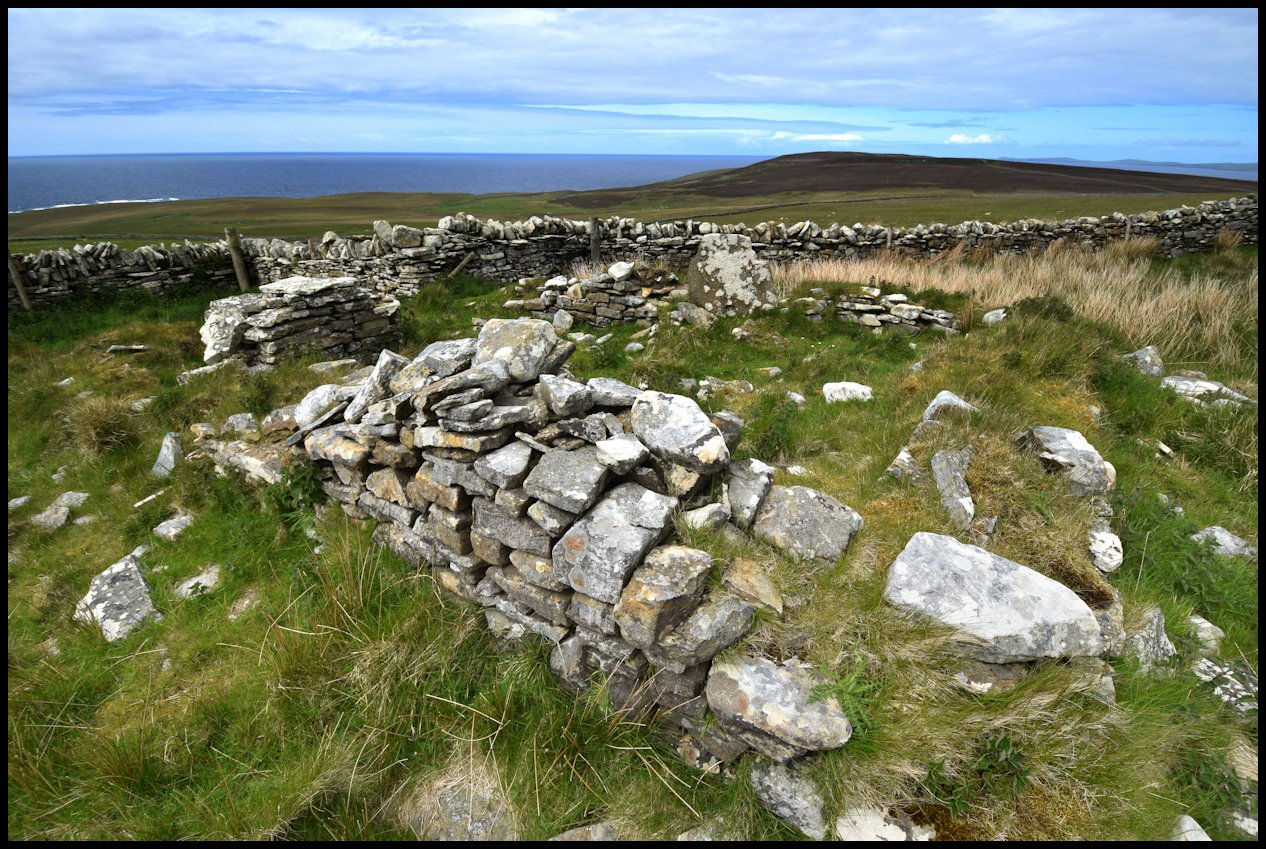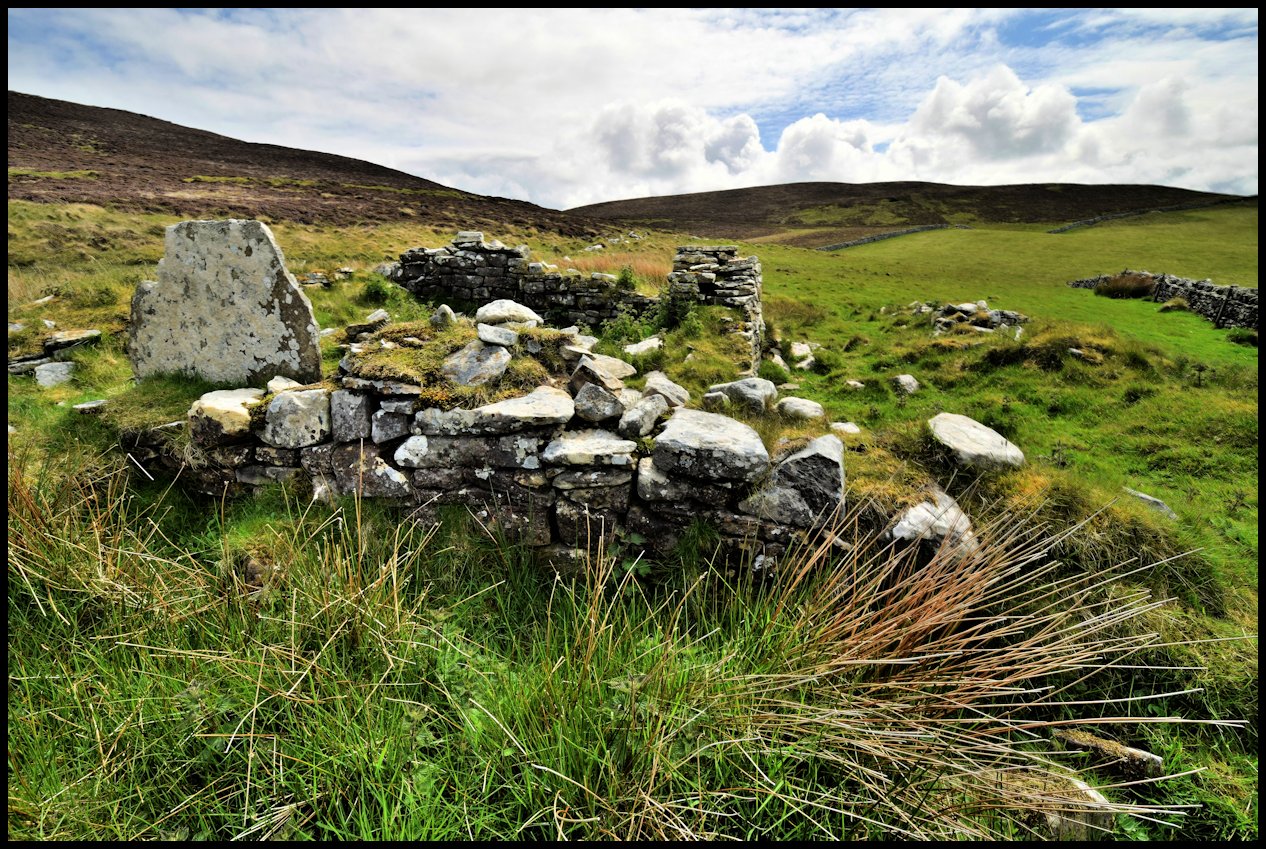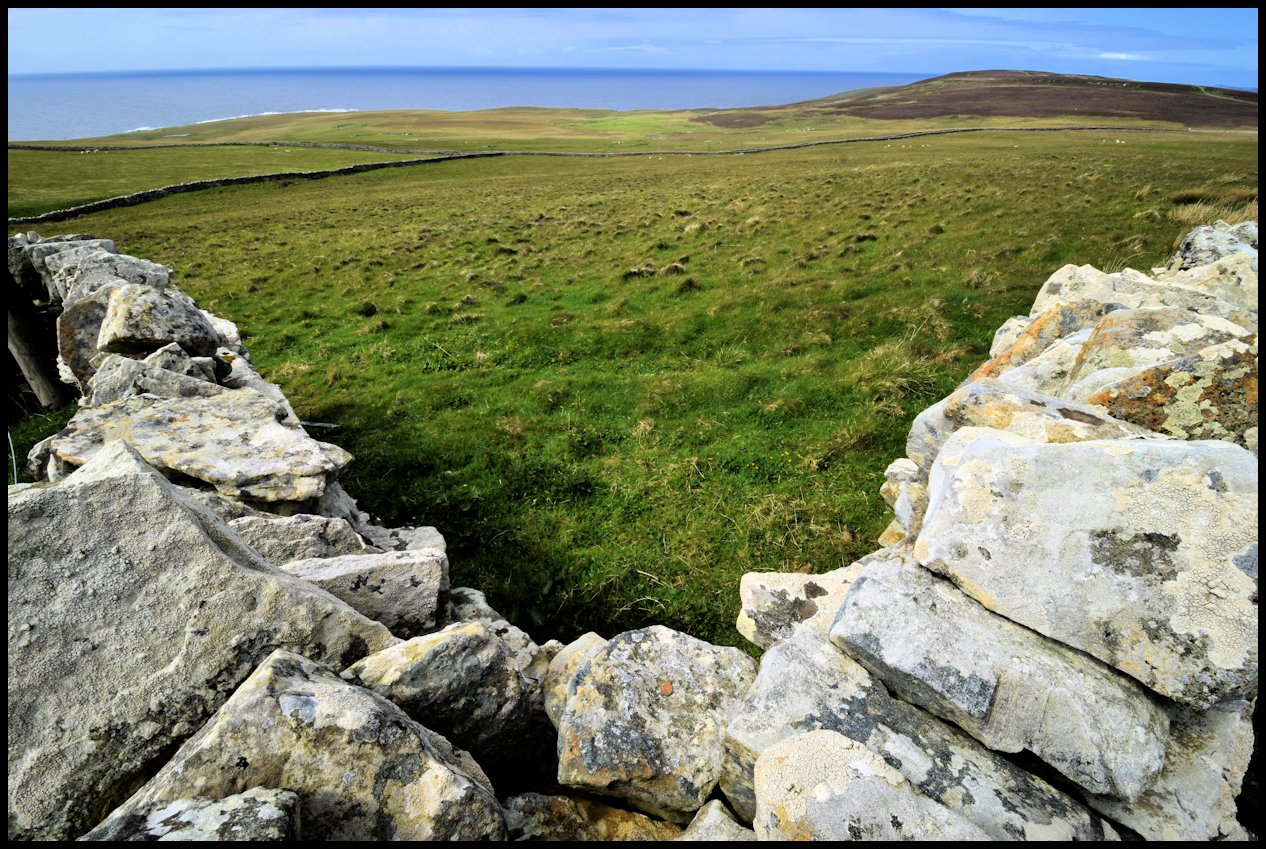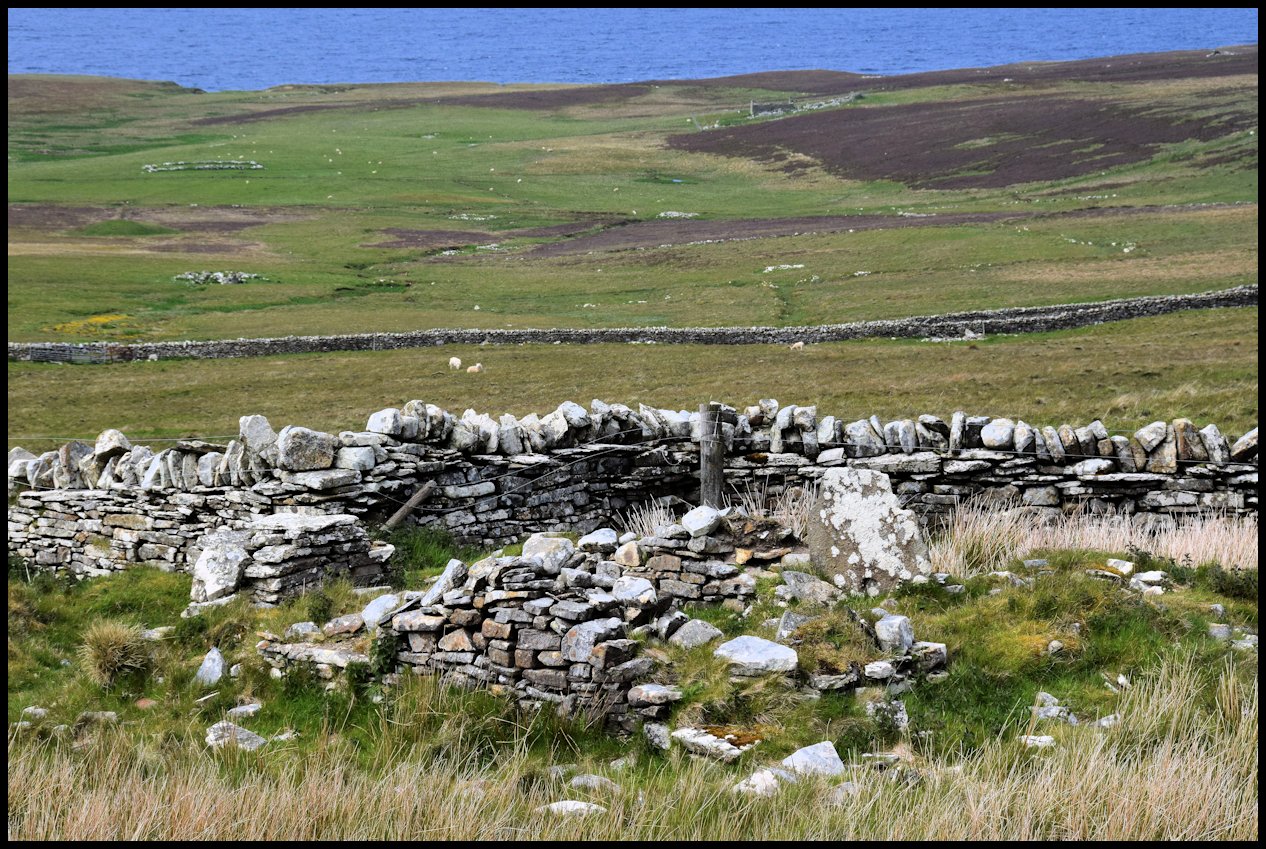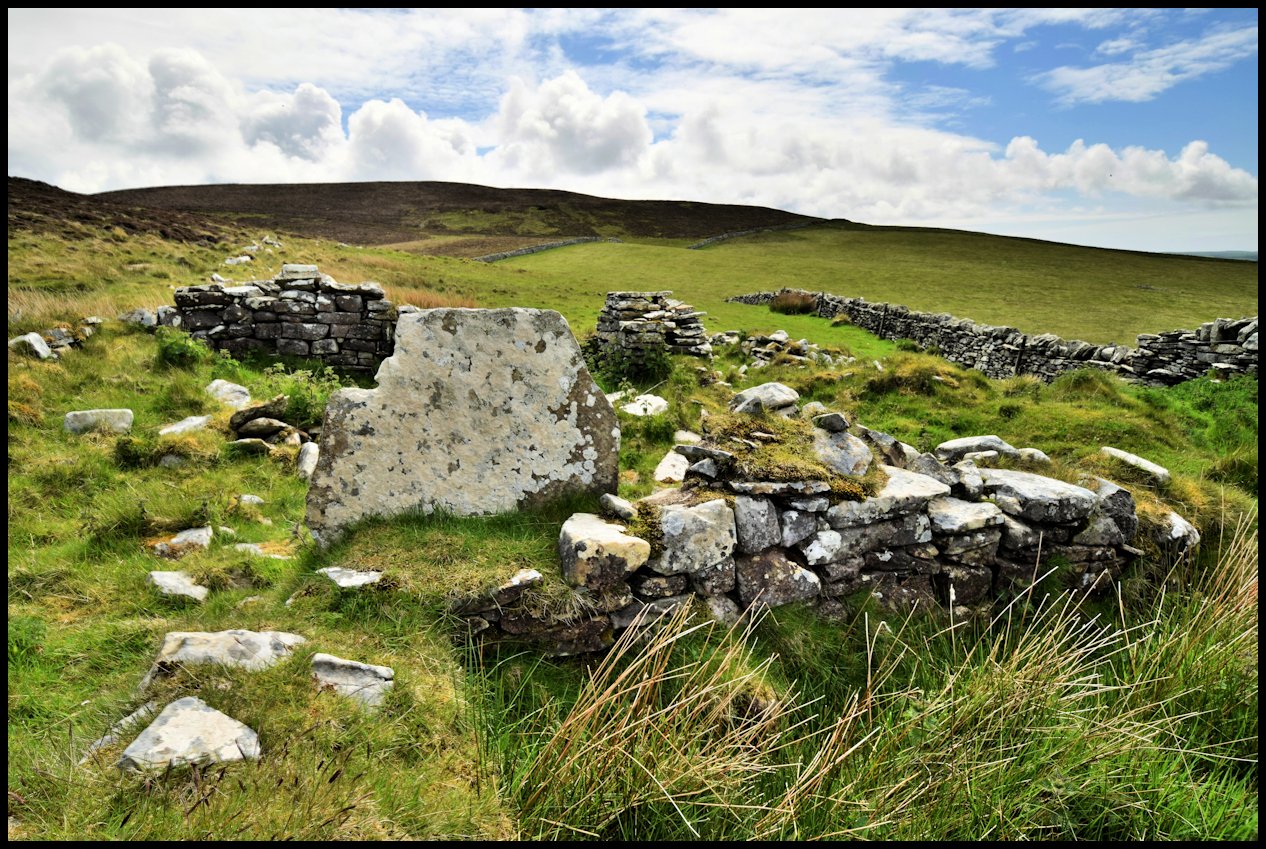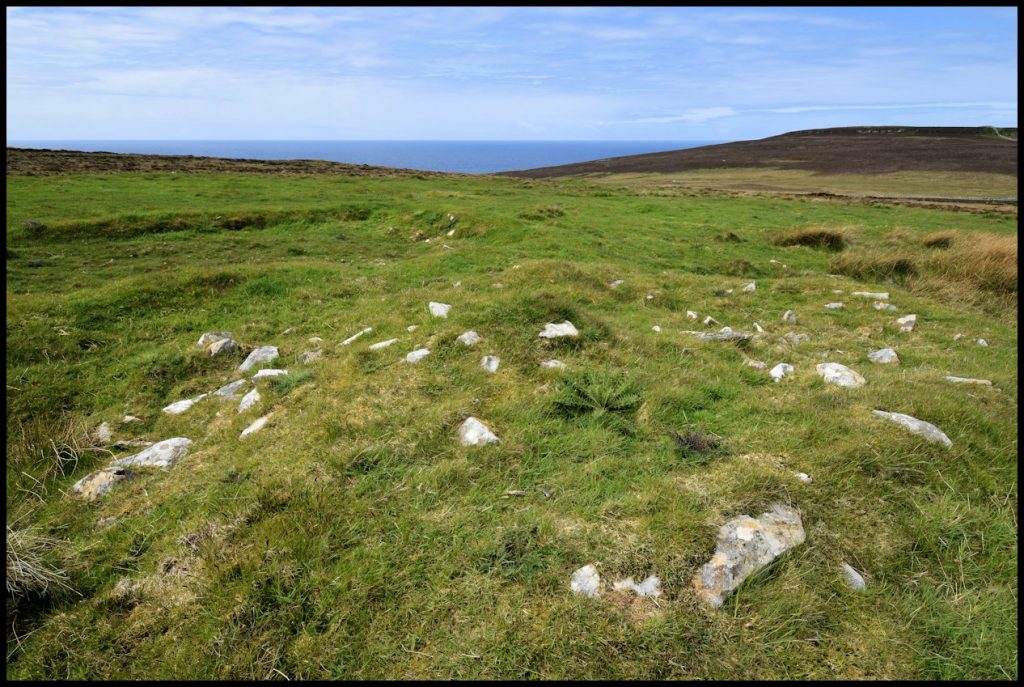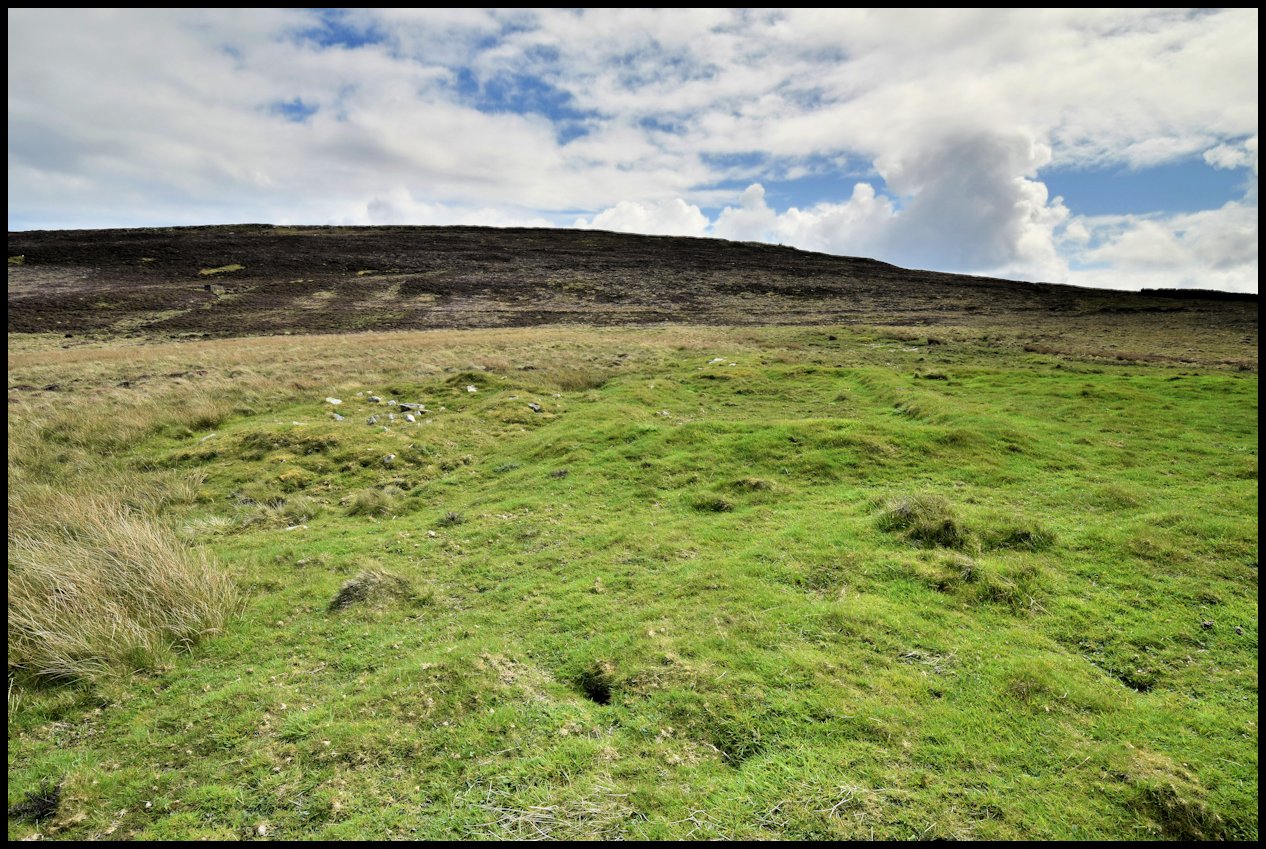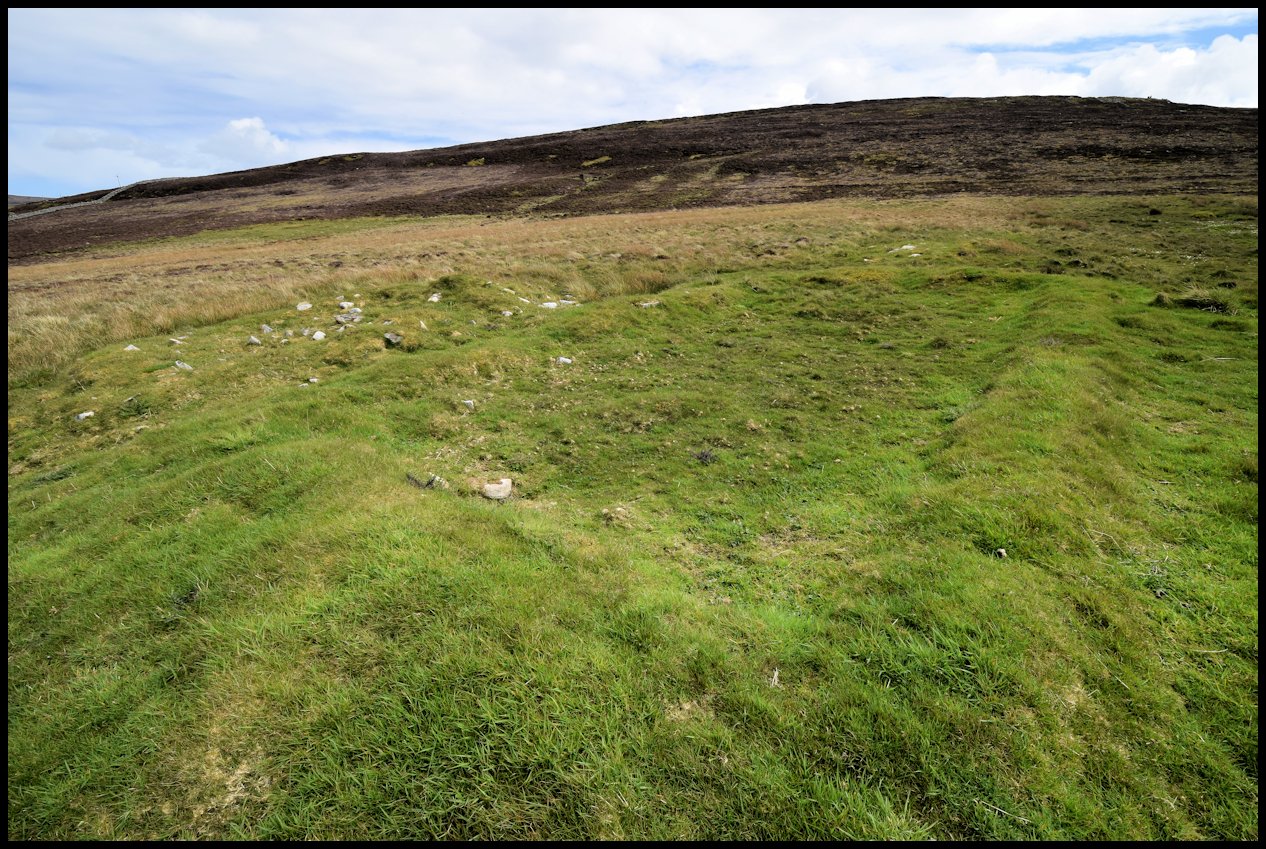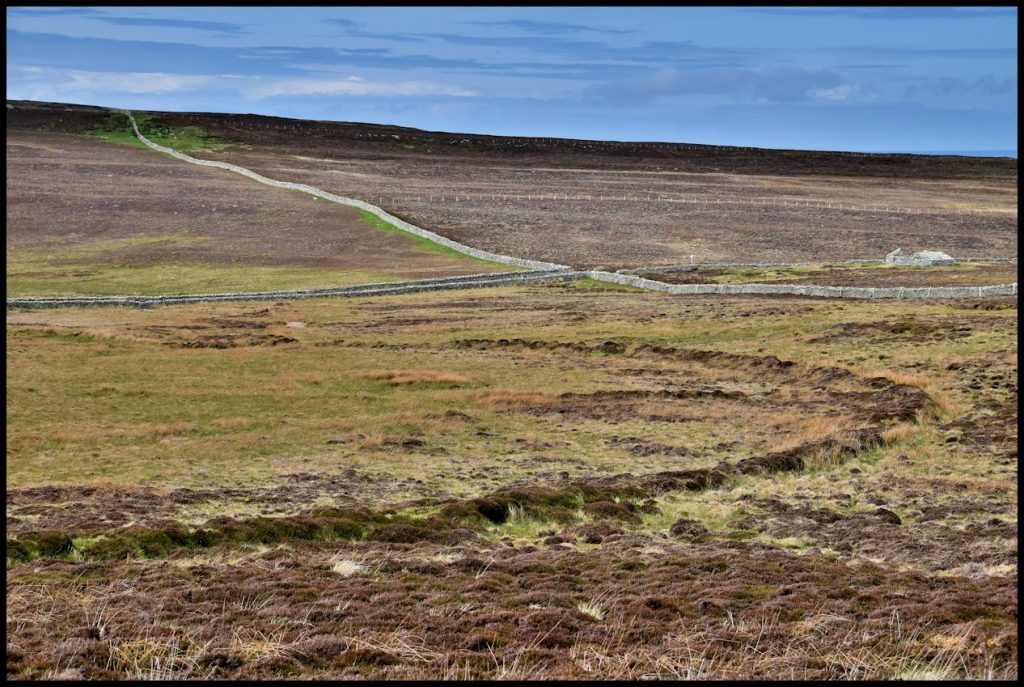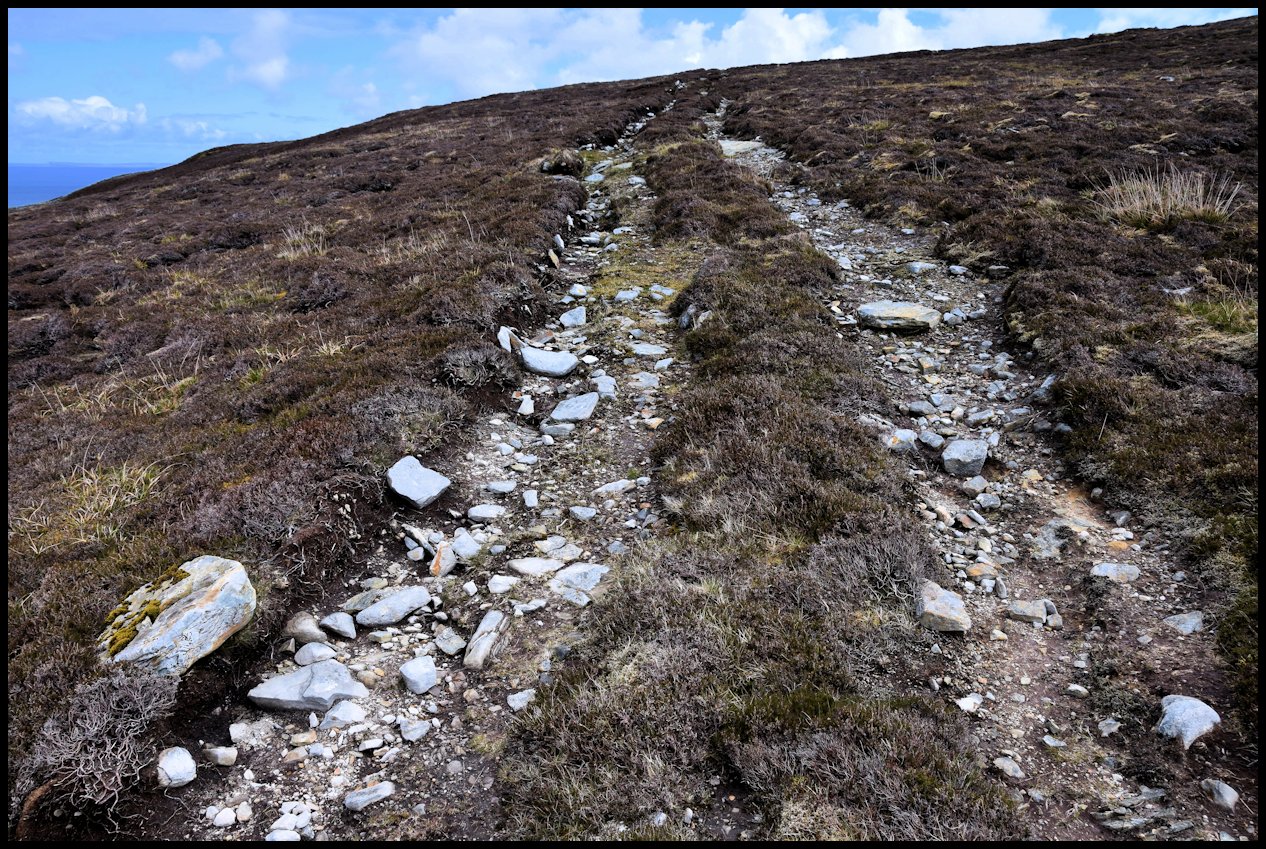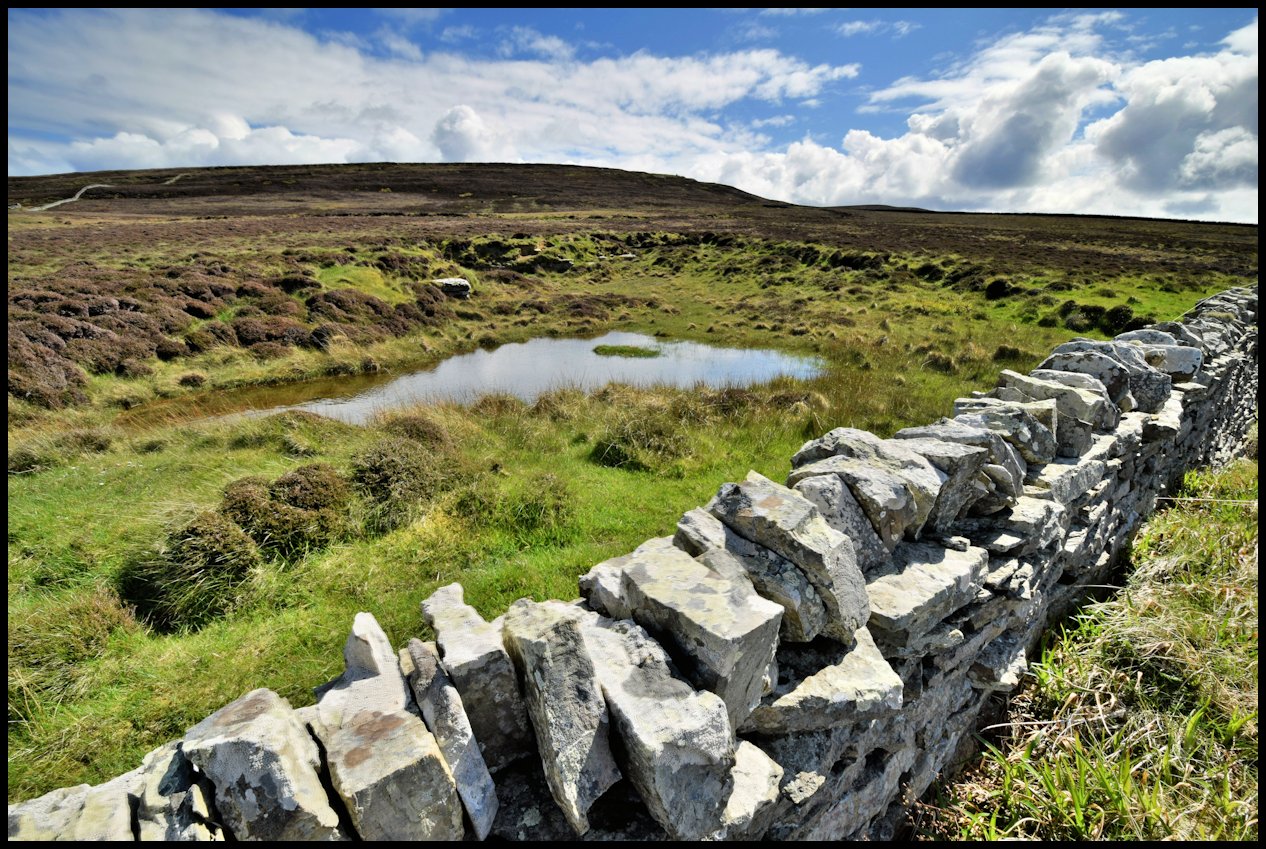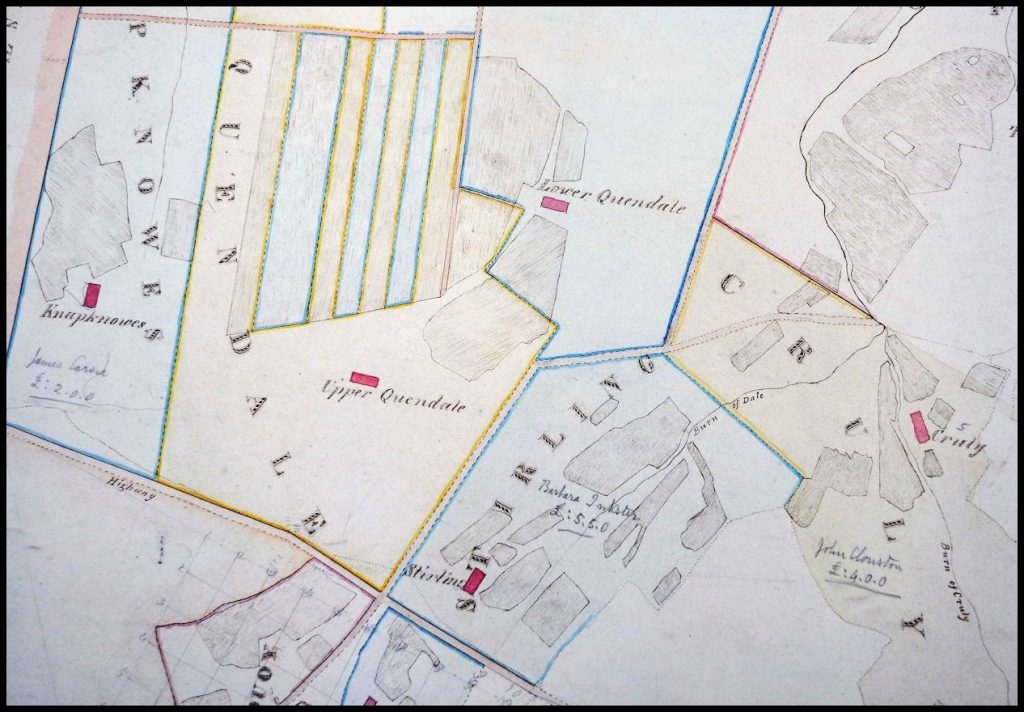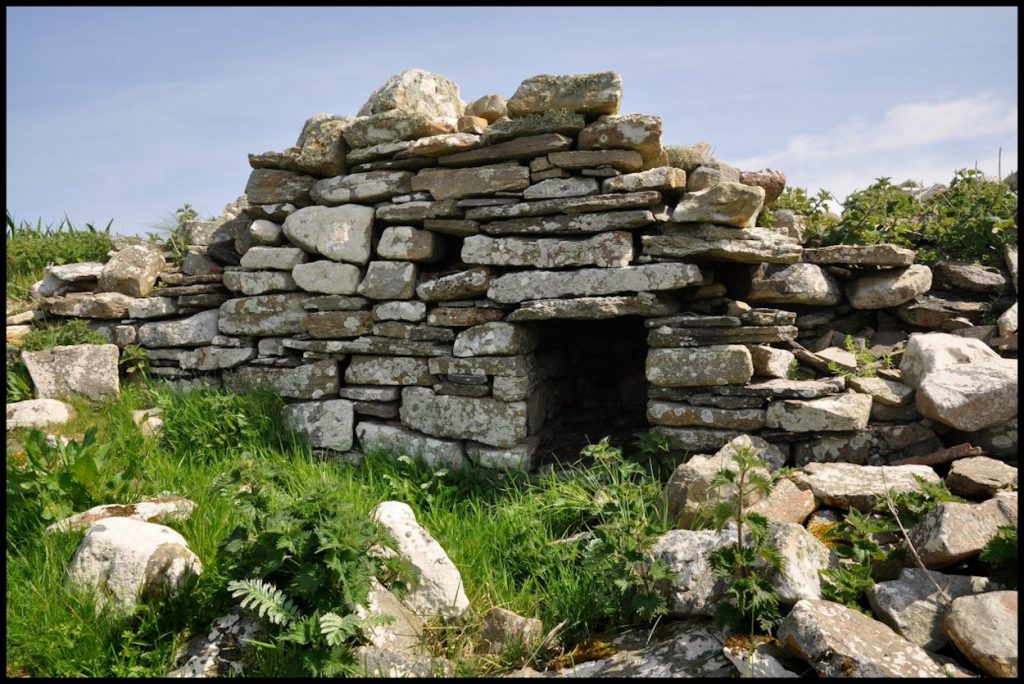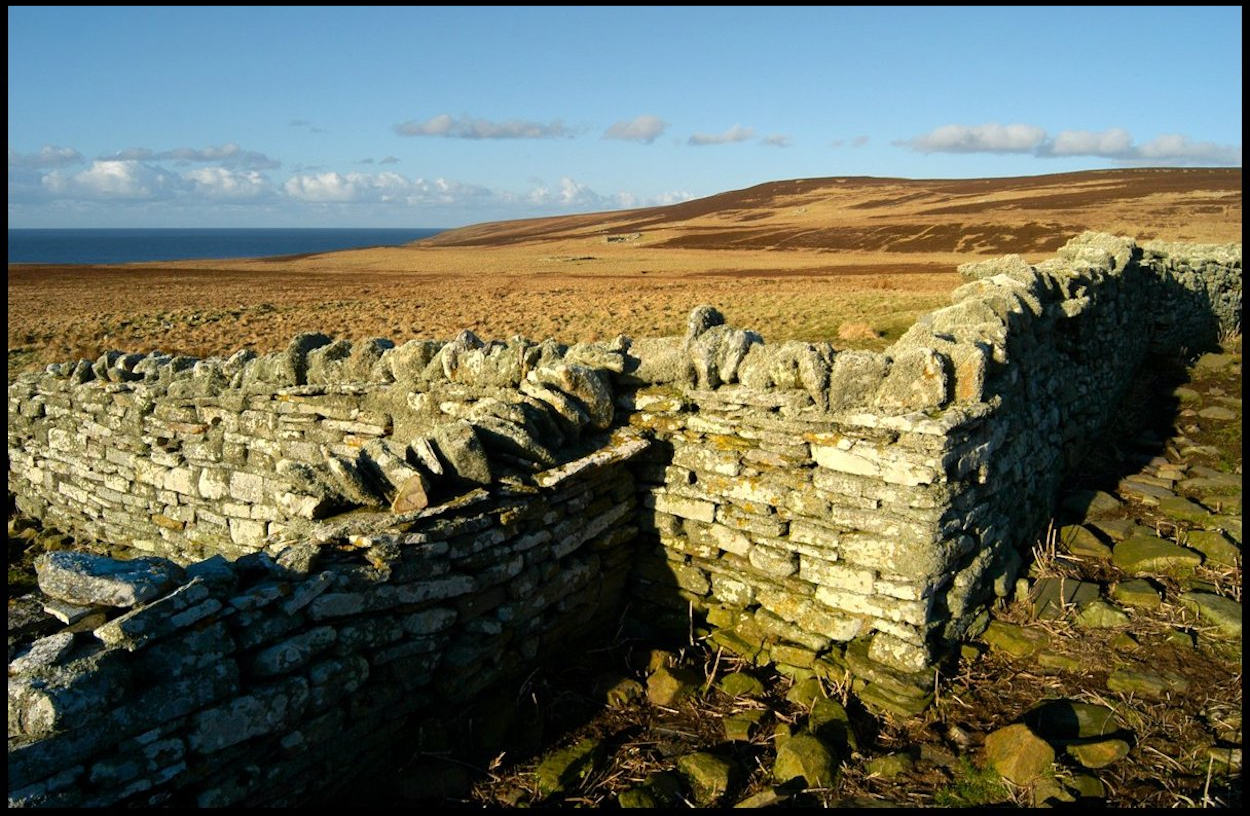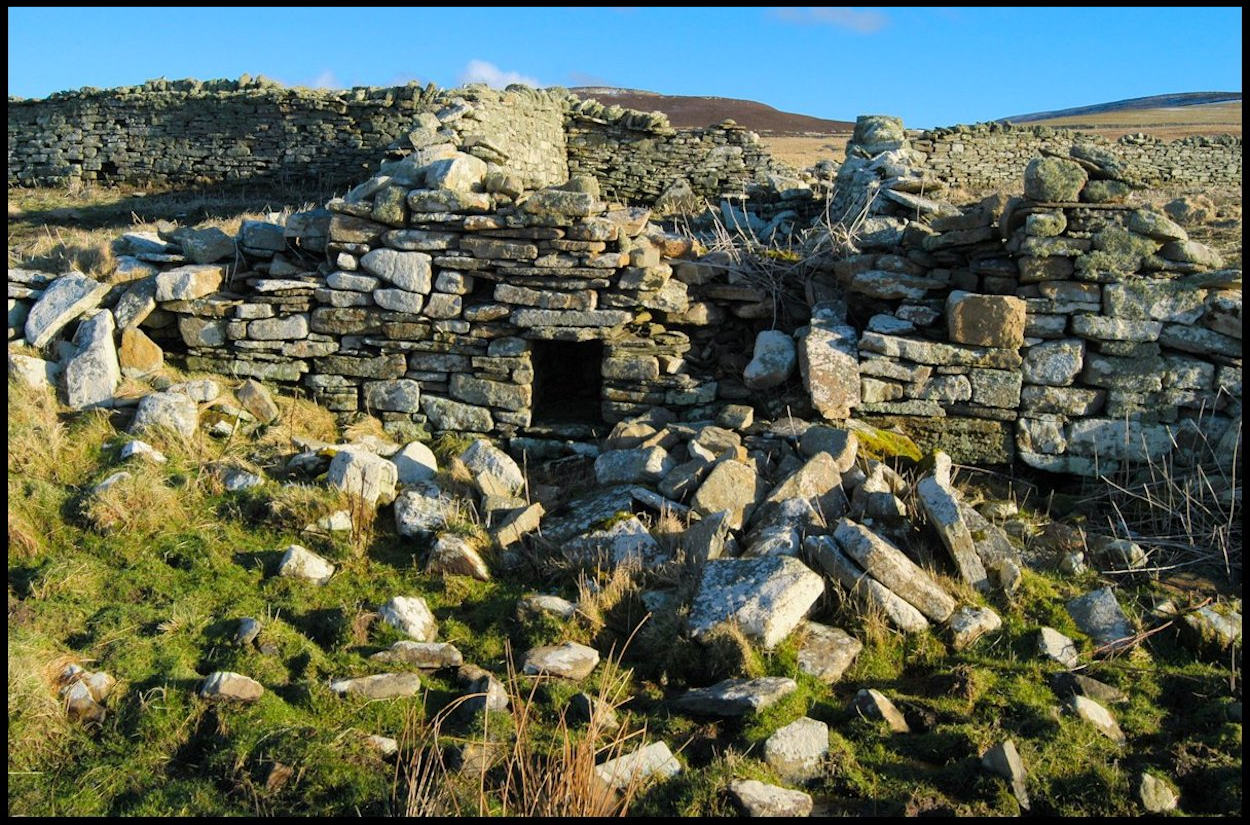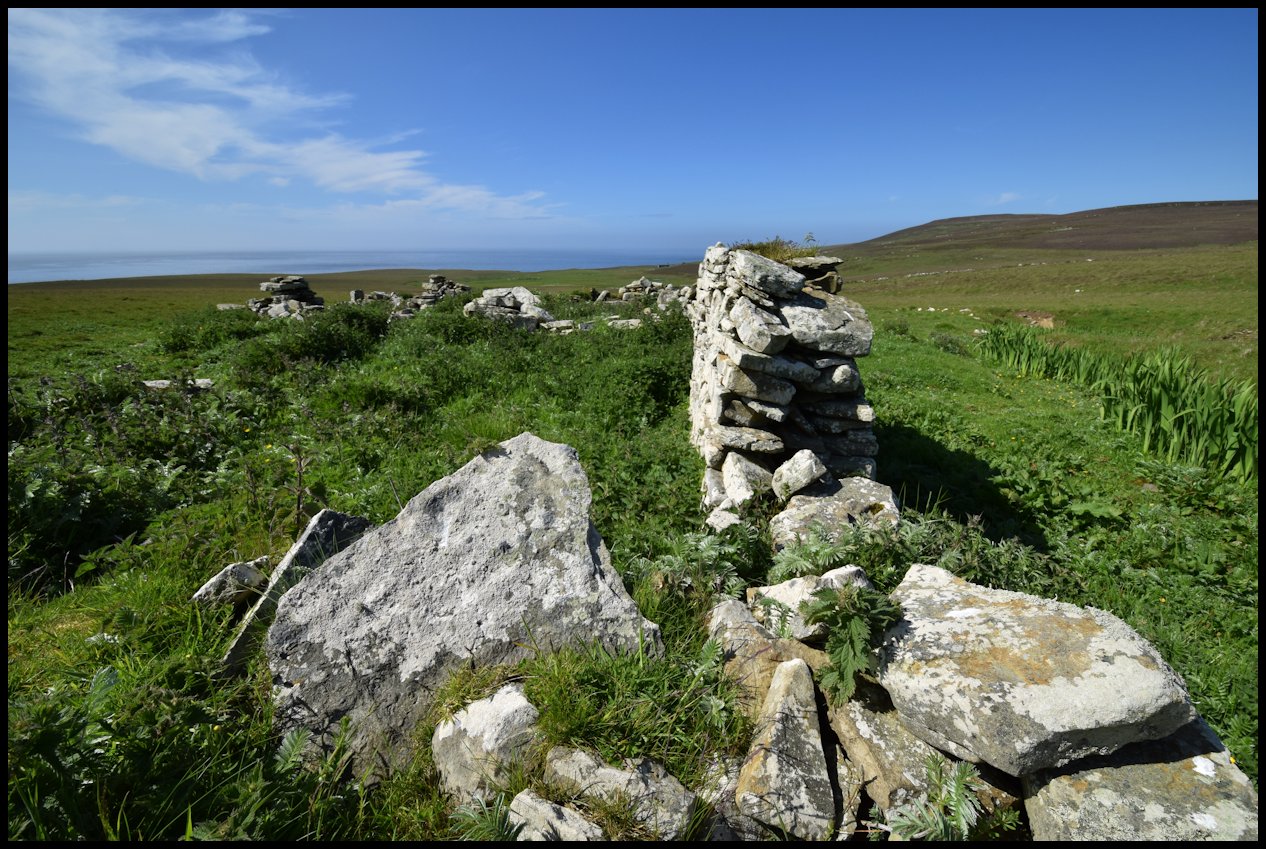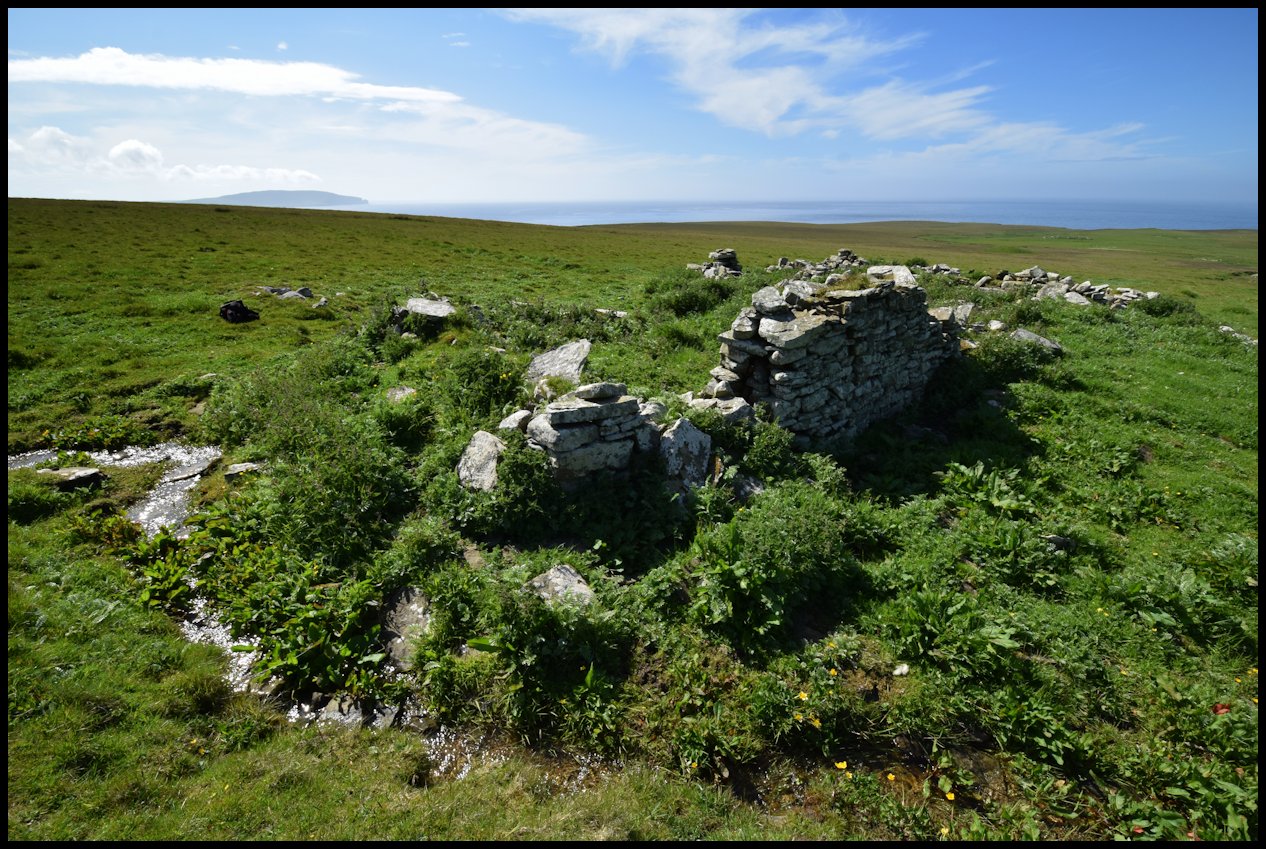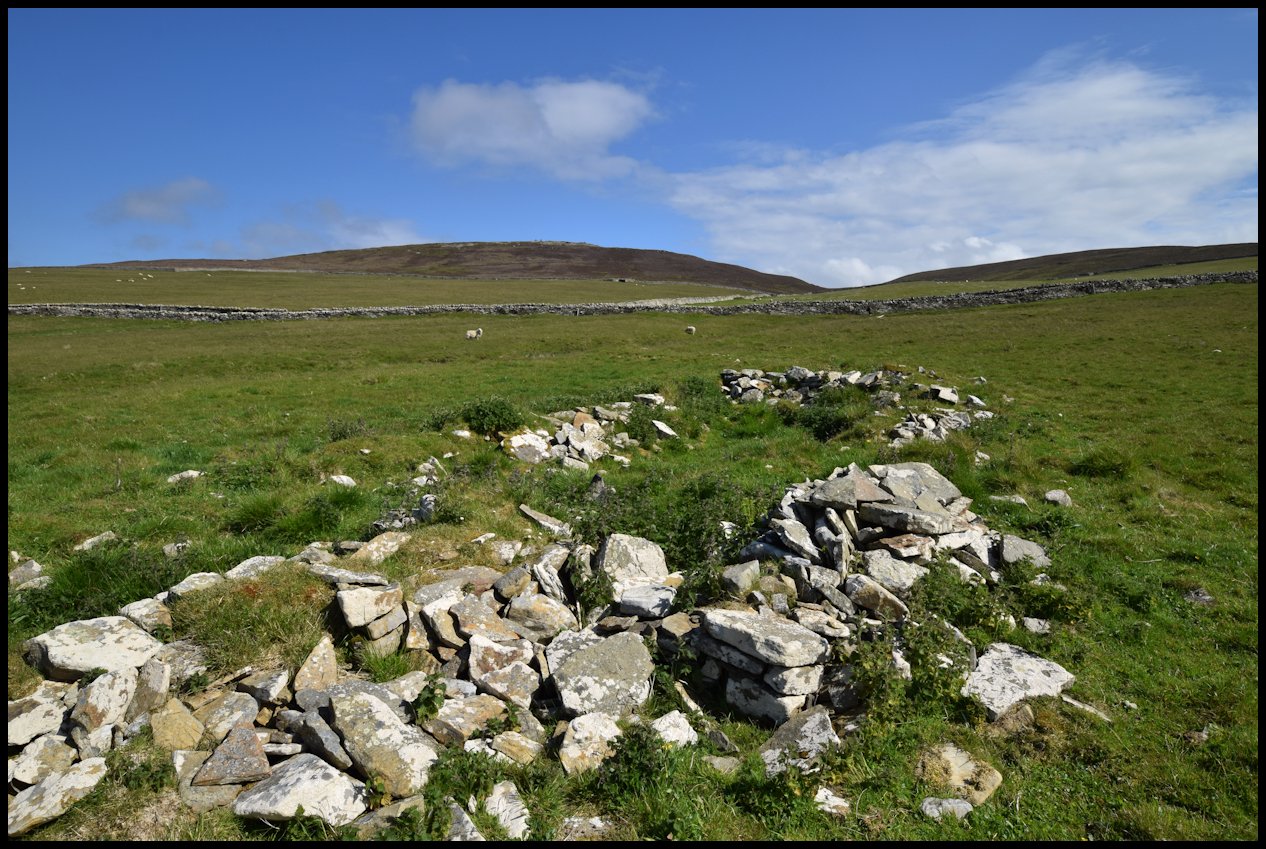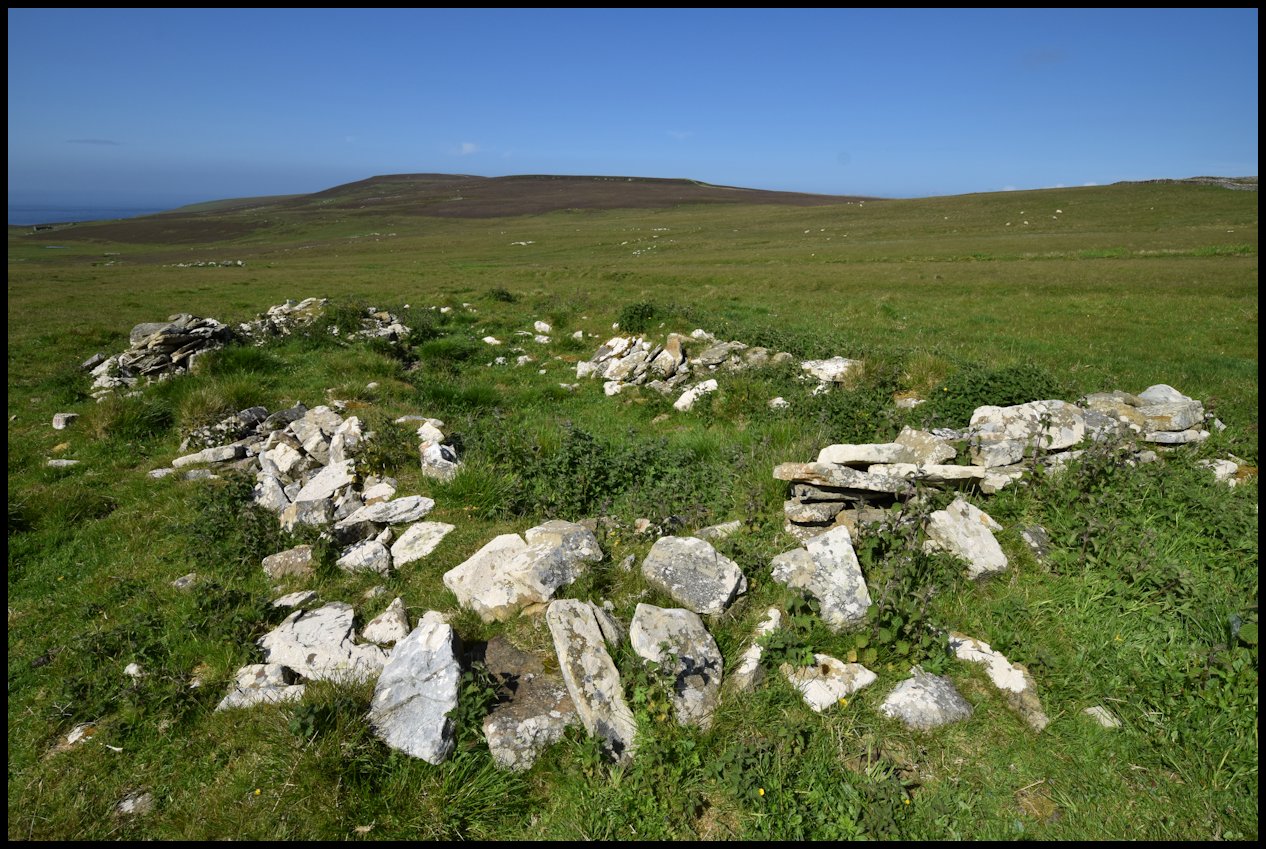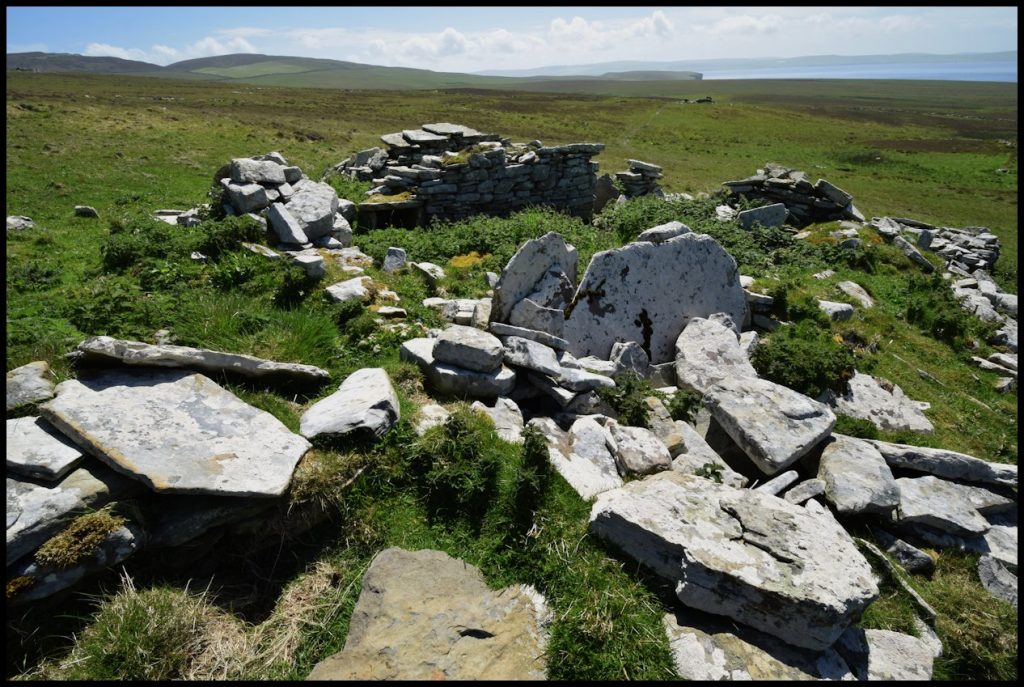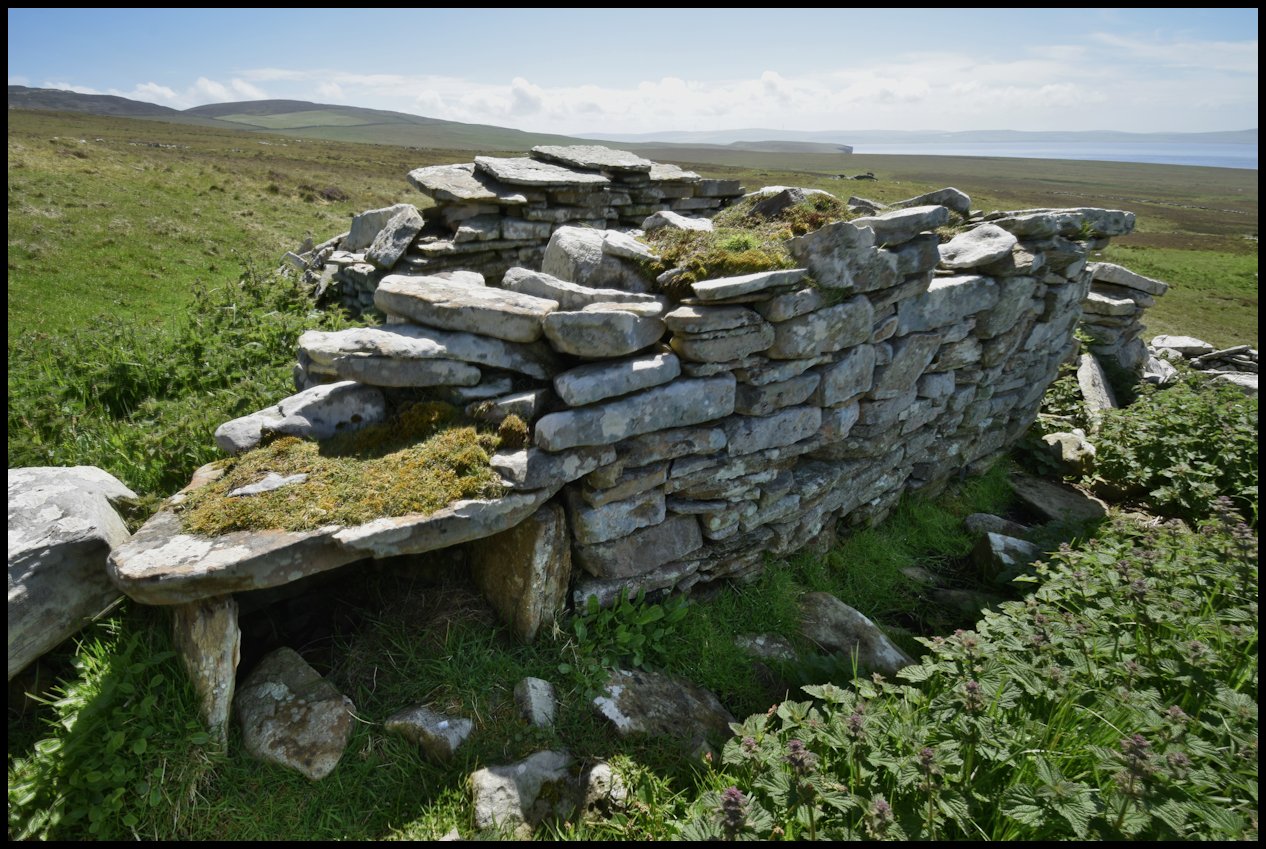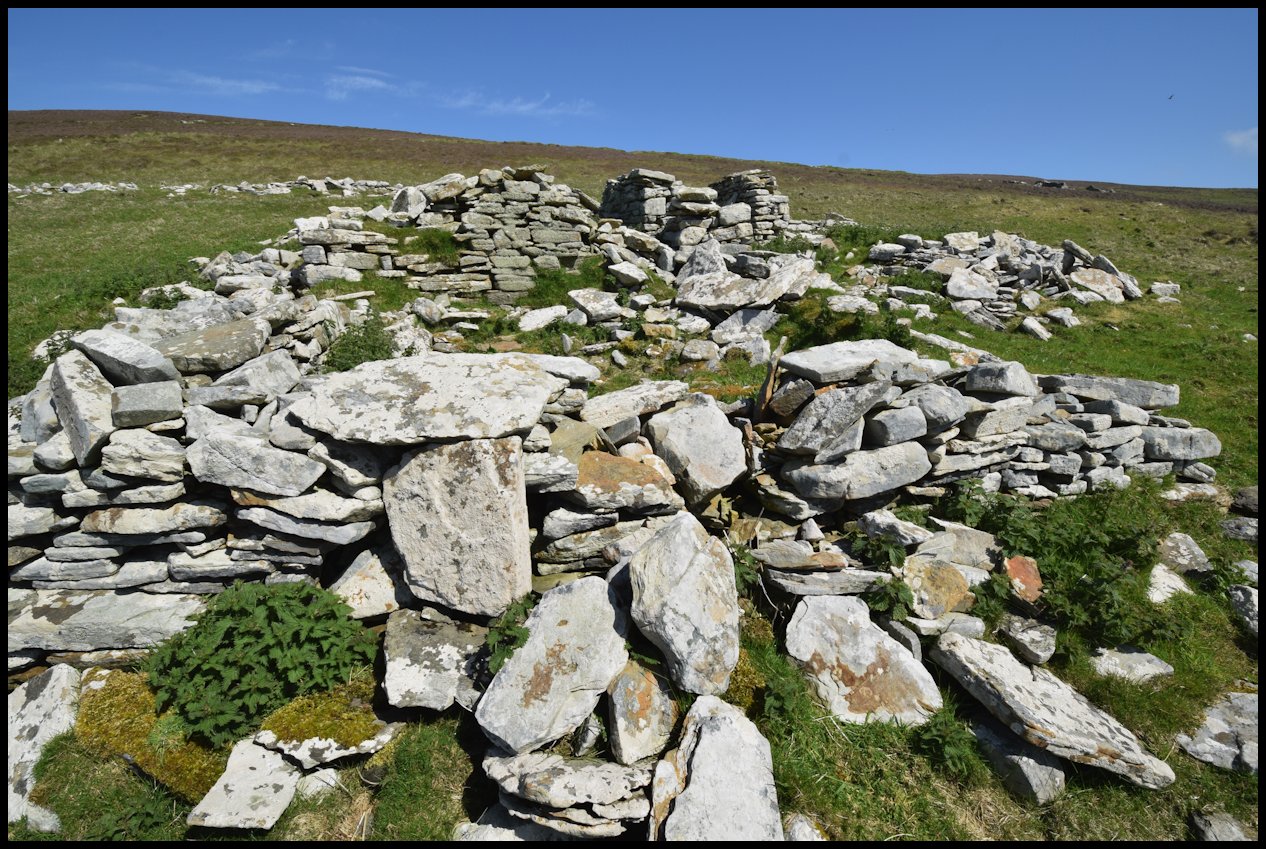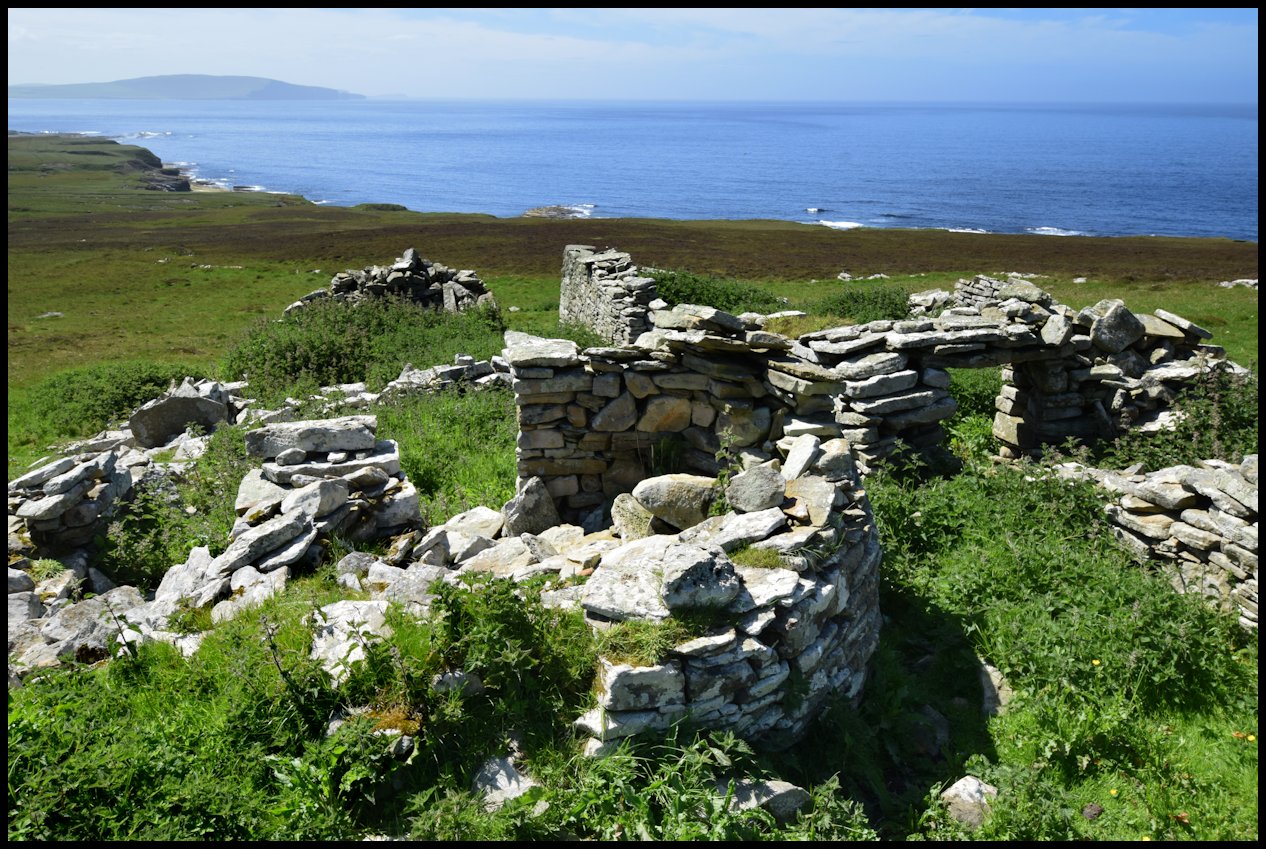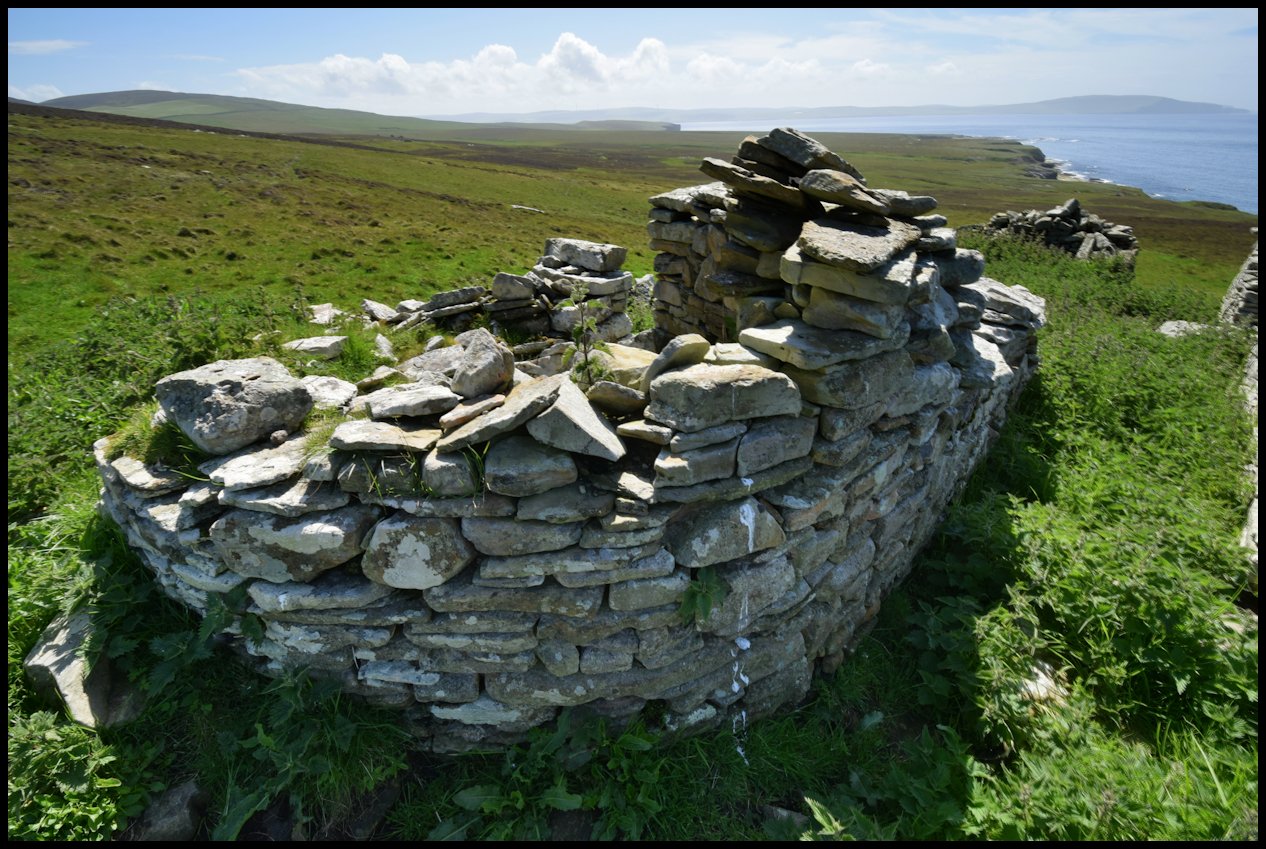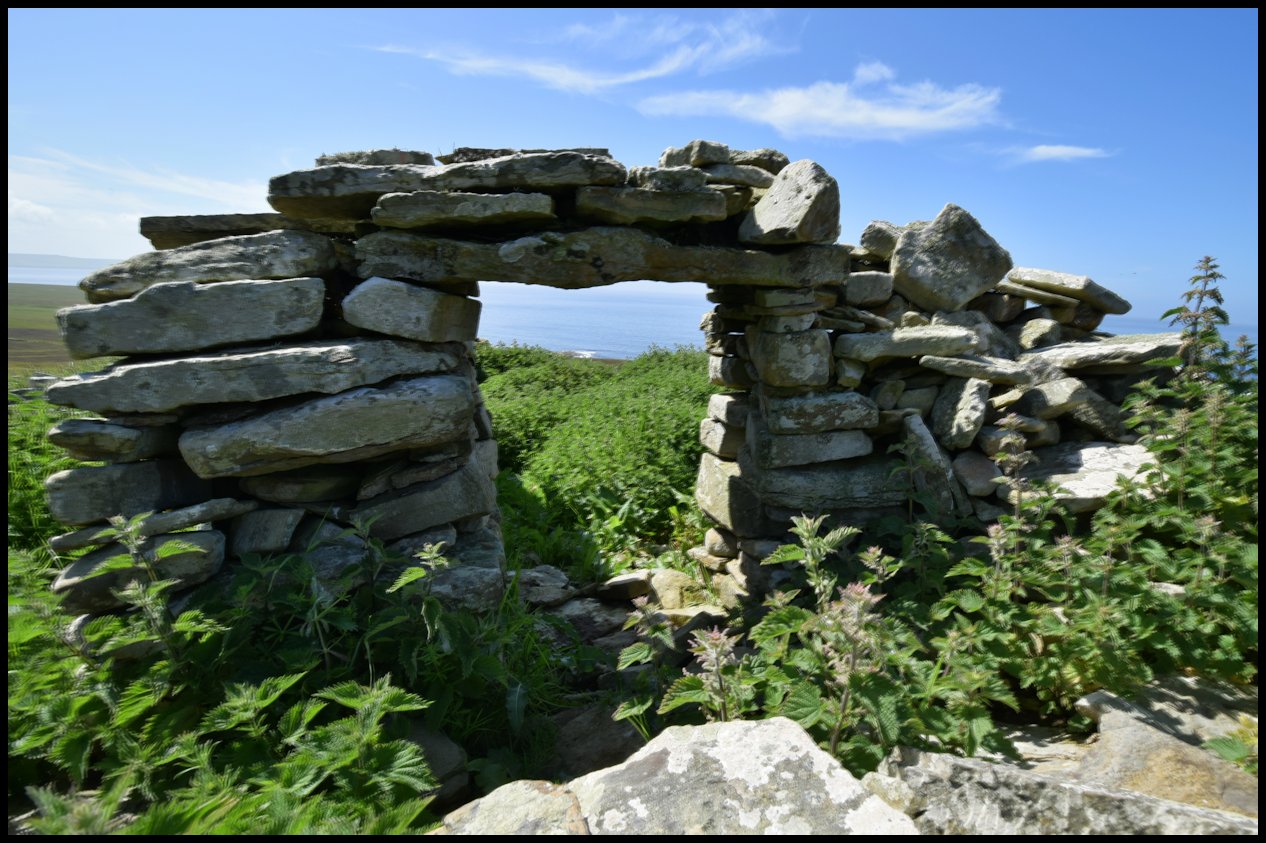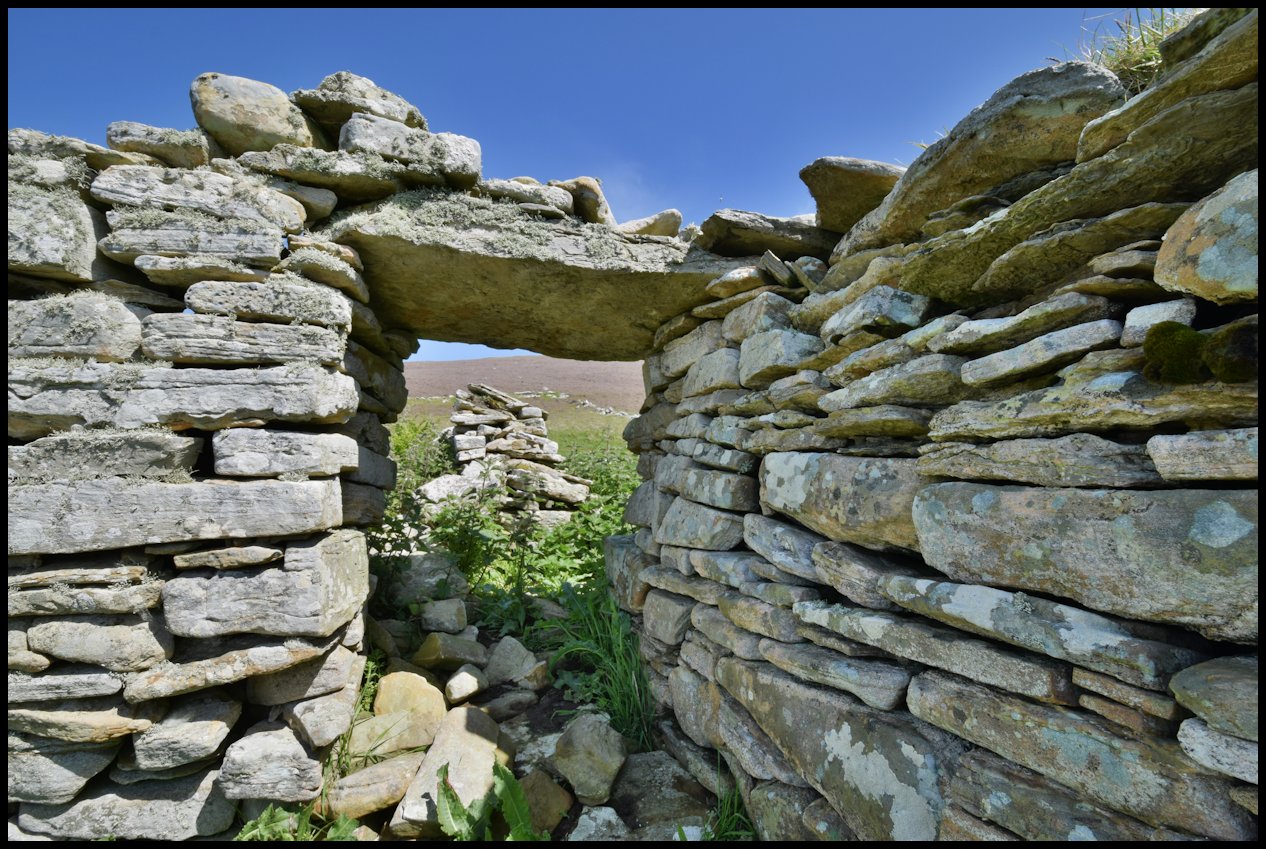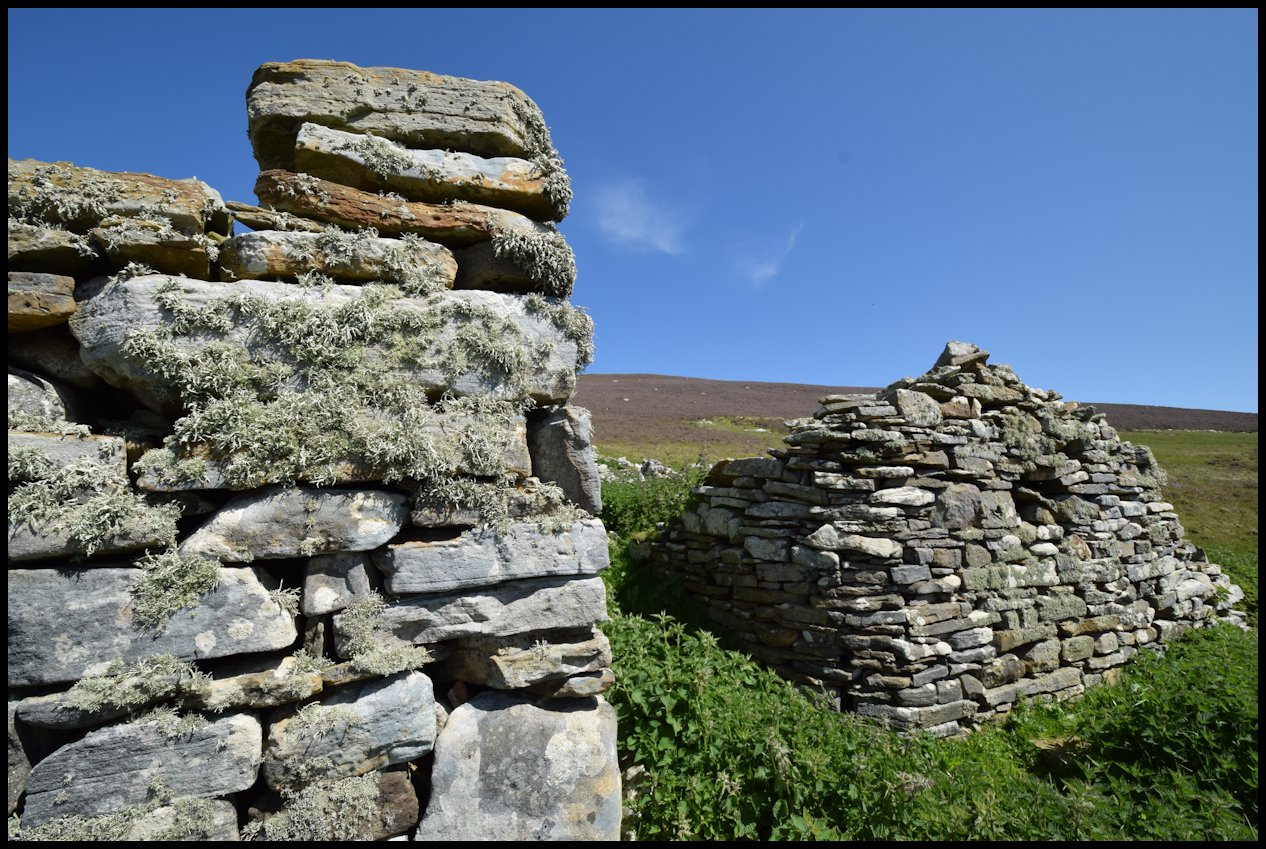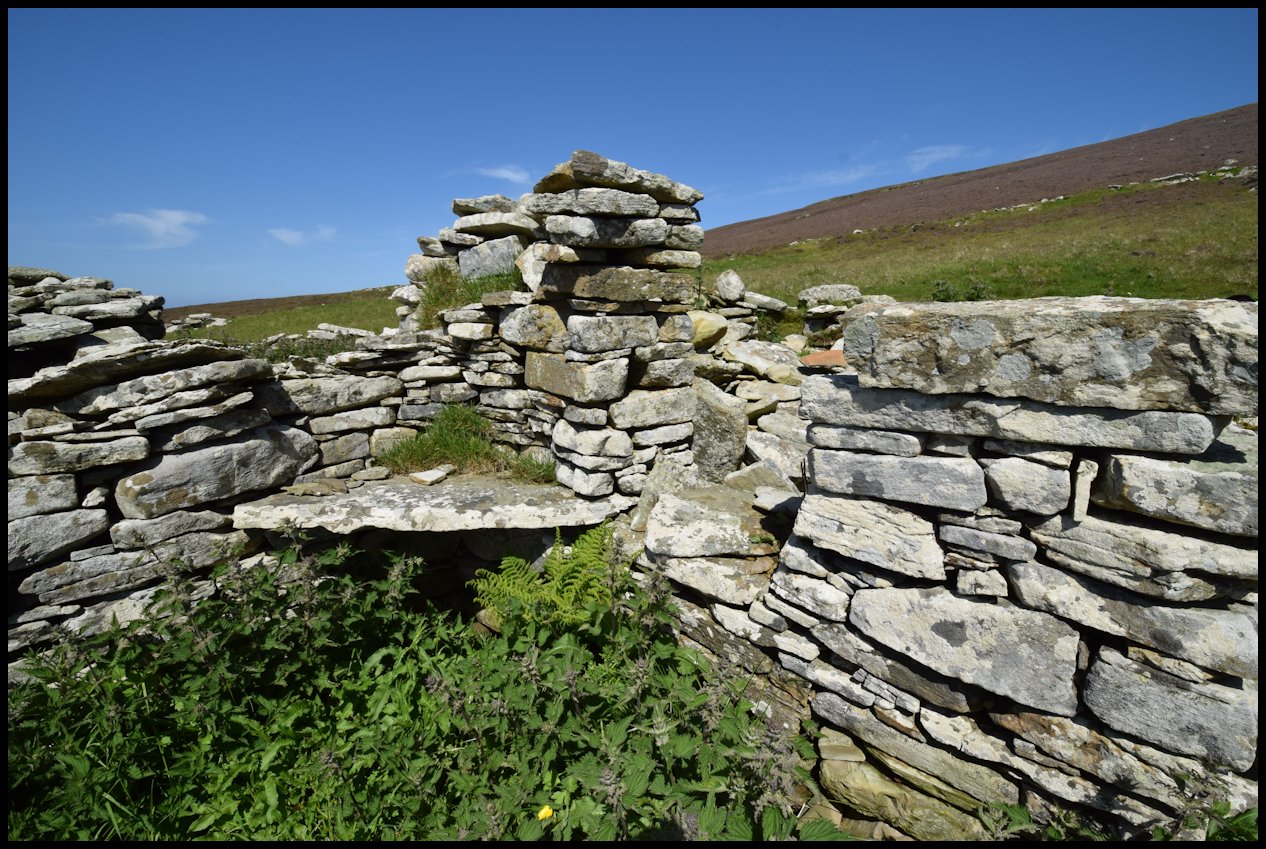Inner Quandale was the smallest district in Rousay, with four farms. The divisions were the dyke at Whome and the dyke from the Sinians of Cutclaws to the main road. In the 1841 census Pow was the largest farm, with George Reid as tenant. George was born in 1808 died in 1900. He was evicted out of Quandale, so he went to Sourin, but found no houses available. He found a site and built Westdale. While he was building the house he slept in the heather. When he finished building, George dug out some the fields by hand. He originally named the house Westdale, being west of Ervadale and Brendale.
Whome with Craigies as tenants and Windbreck with Logies are the other two farms. Another house, long since empty then, called Geurhouse was taken over by Windbreck. Inner Quandale was depopulated by the l860’s.
Fishing Geo
Whisber [above left] and the sheer face of rock to the north [right]
In the days of fishing in Rousay small boats had to go out to the fishing grounds. At certain states of the tide it could be slightly hazardous. Boats used to go and shelter in the Fishing Geo, the sea never broke in the Geo and the boats rose and fell in the swell while the big rollers broke a few yards away. The Hole of the Horse is a natural sea arch to the north of the Fishing Geo. The Sinians, this is a large hole in the cliffs near to the division dyke to the north. This used to have a natural arch across. This was perhaps 15 feet across. This divided the Sinians in two. This huge arch fell down in the mid 50’s.
Spectacular seascapes either side of The Hole o’ the Horse, Scabra Head
The Sinians of Cutclaws: from the outside looking in {left], and the inside looking down [right].
Below is a Tom Kent photo, c1900, showing Scabra Head and the Hole o’ the Horse – from the Sinians interior.
[Image courtesy of Orkney Library & Archive]
In the l920’s a golf club was formed in Rousay and a nine hole course was created in Inner Quandale. This was a very popular pastime with a large membership of young and not so young men. Hugh Marwick of Moan in Wasbister was employed as the green keeper. A corrugated iron shed was bought and placed above Wholme to keep the mowers and flags. Members of the Kirkwall and Stromness golf clubs were invited and came out to Rousay and played many tournaments. This club was finished by the end of the l930’s.
The western view from ‘Golf Course Corner’: Midhowe to the left, with Eynhallow and Costa Head across the water, Scabra Head, and Quoynalonganess to the right
In the early sixties another golf club was formed. Concerts were rehearsed and performed, cards were played, dances were organised, all to make funds. This club was active till about I967-8. This was due to depopulation in Rousay.
It was said at the time, this was the best natural golf course in the north of Scotland, with its braes, humps and hollows. One man walking between the first and second holes slid, fell and broke his leg ended up in hospital for a few weeks. The club was finished by the late 60’s.
[My thanks to Tommy Gibson, Brinola, for allowing me to reproduce his story of Inner Quandale]
